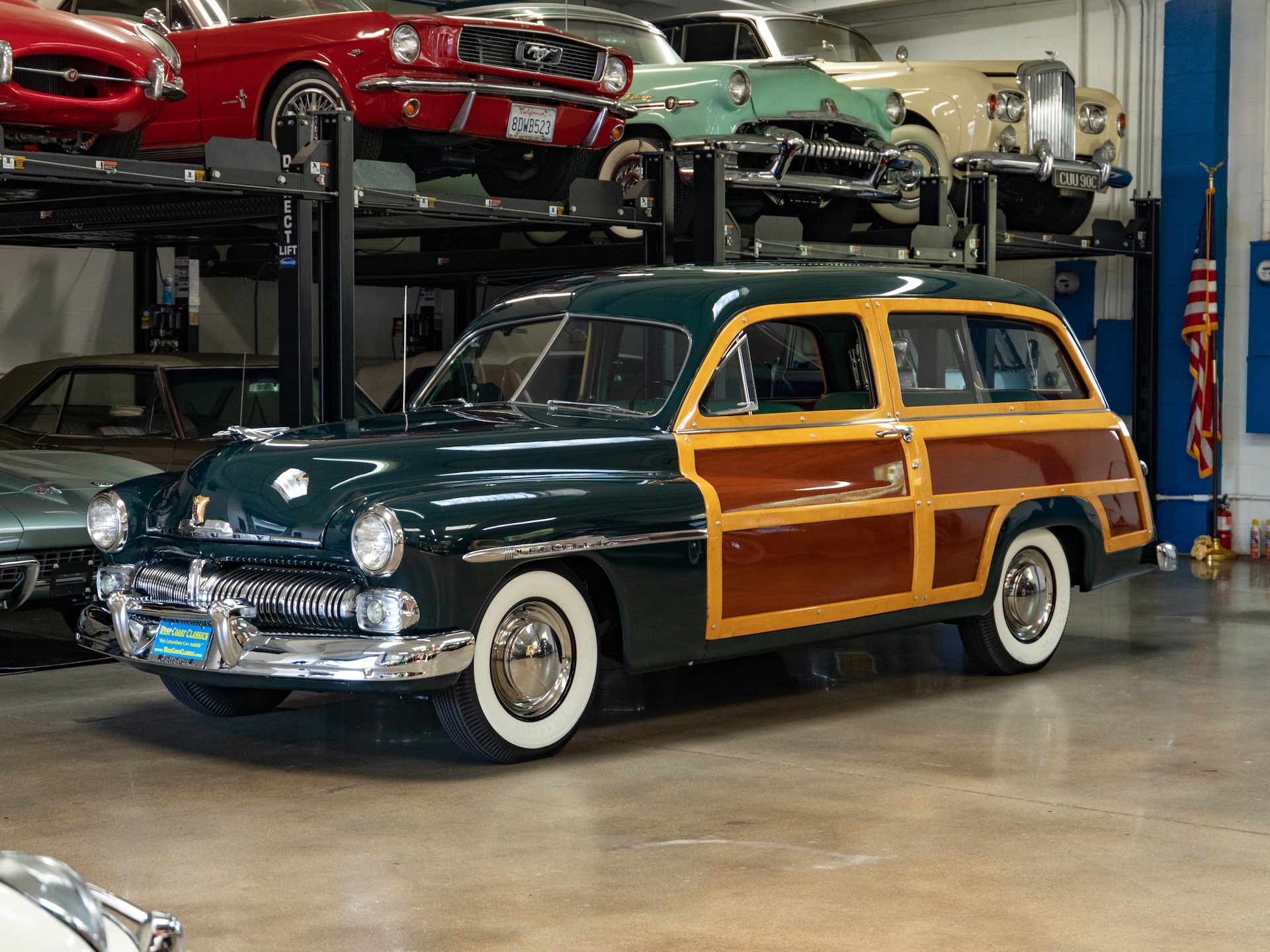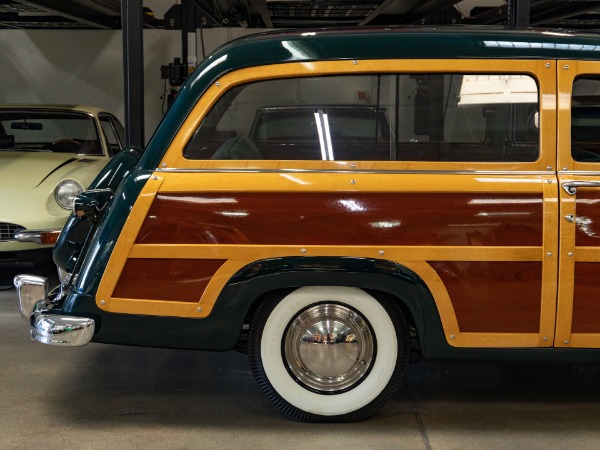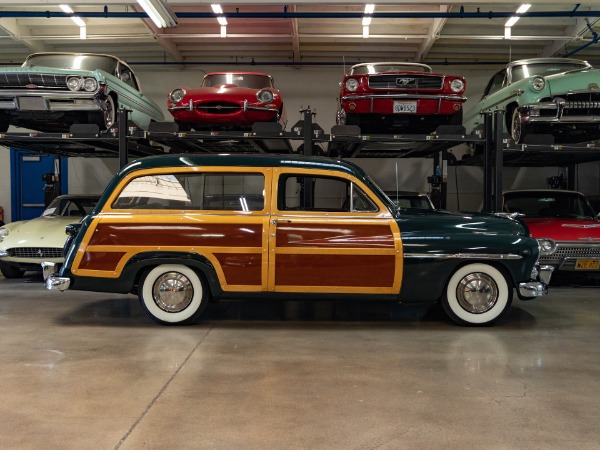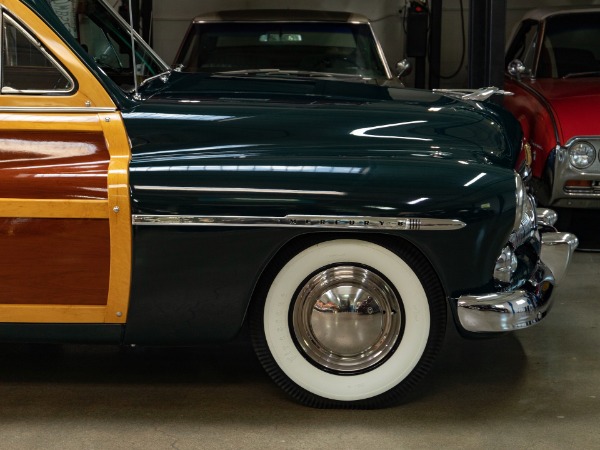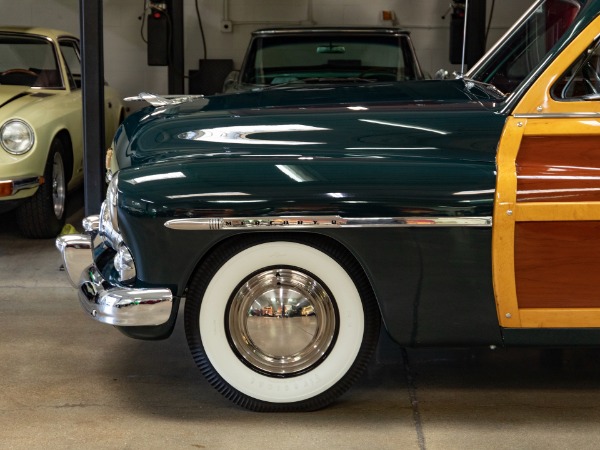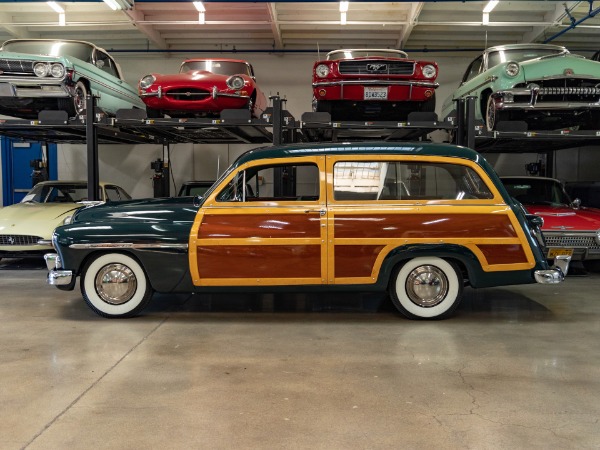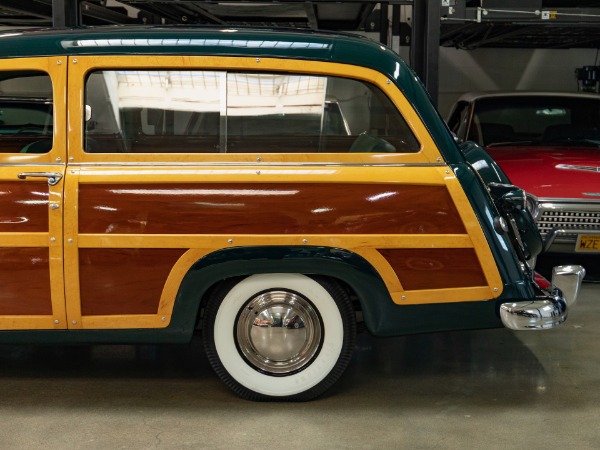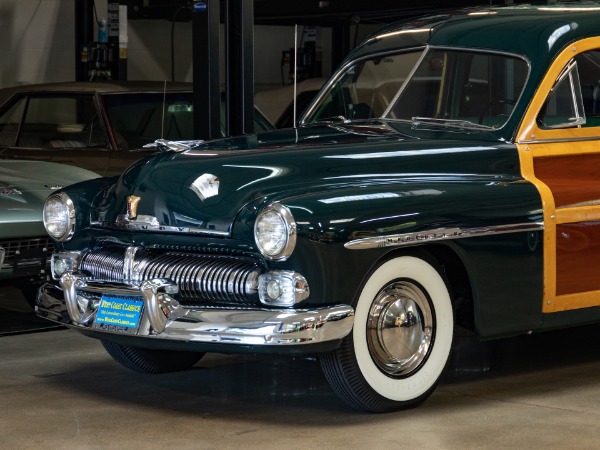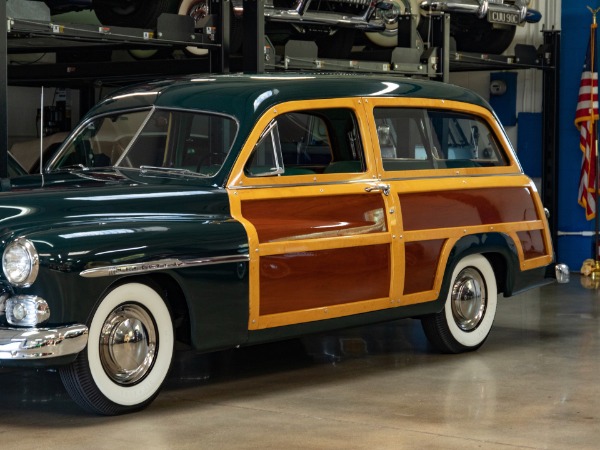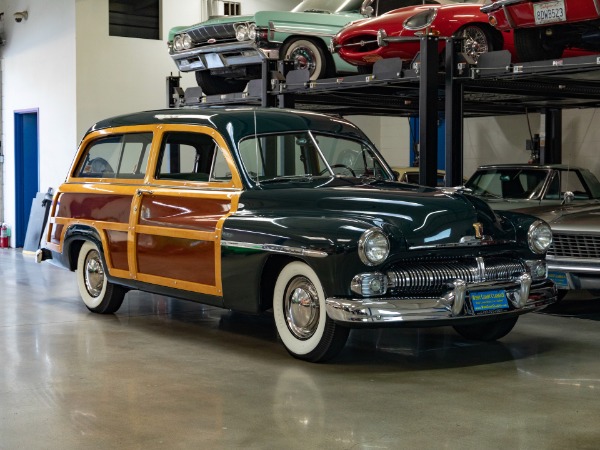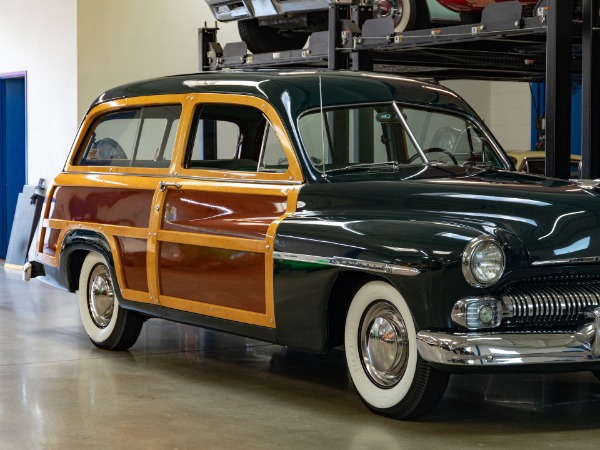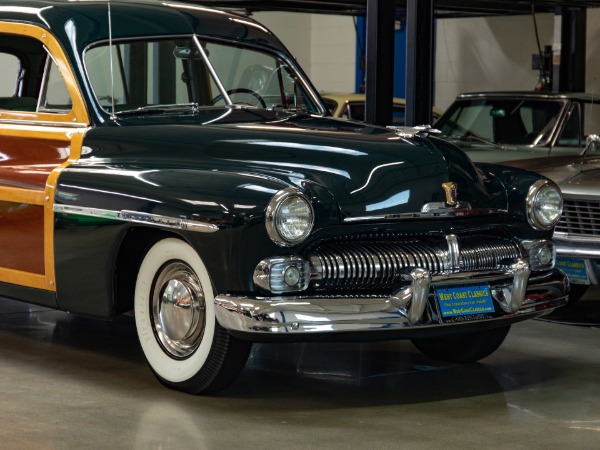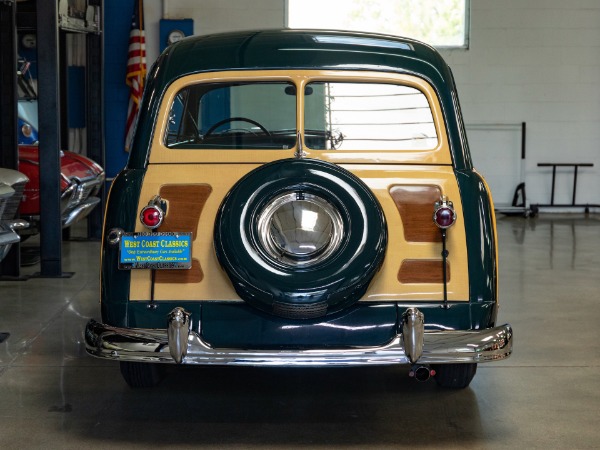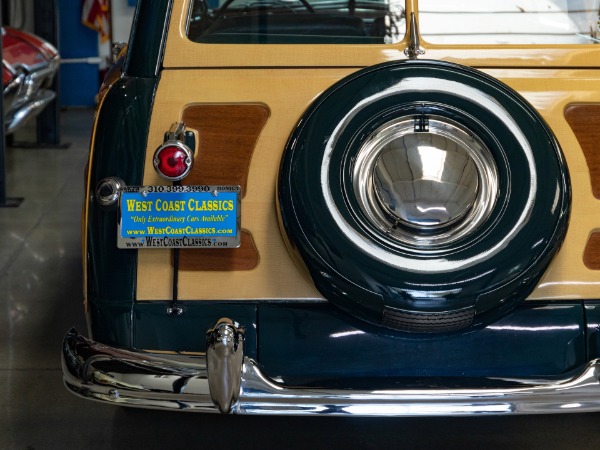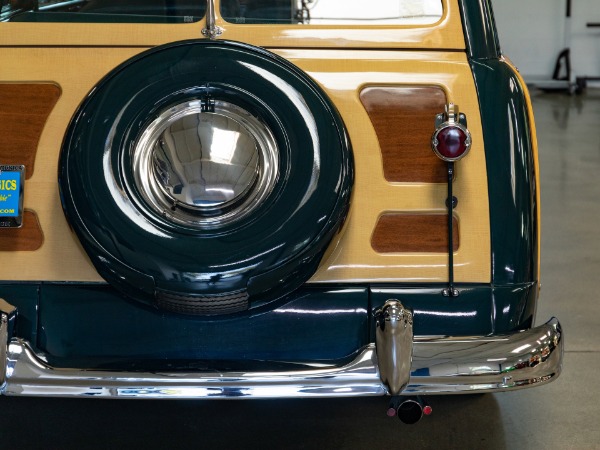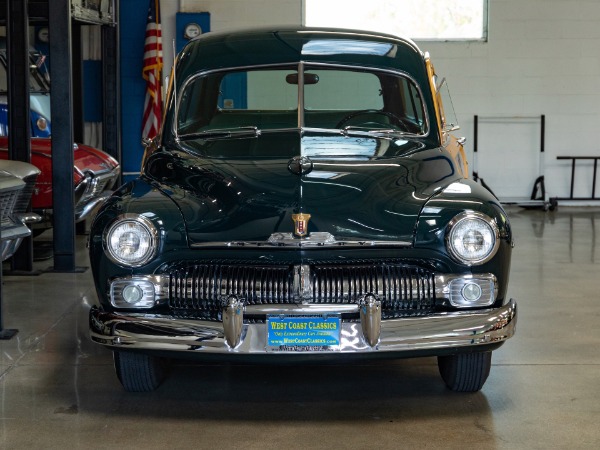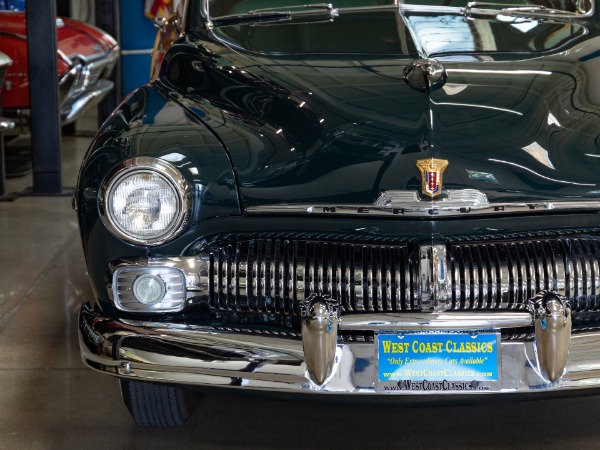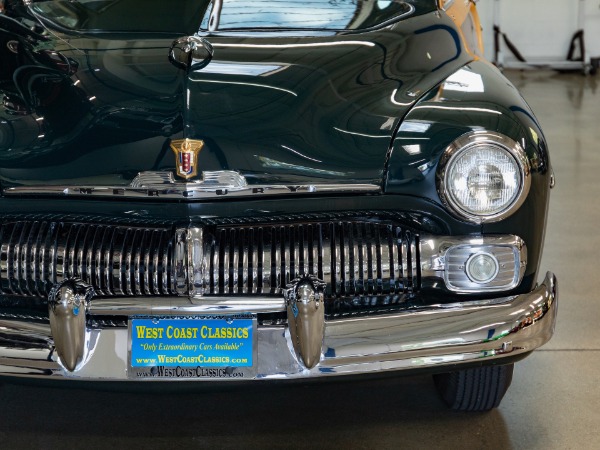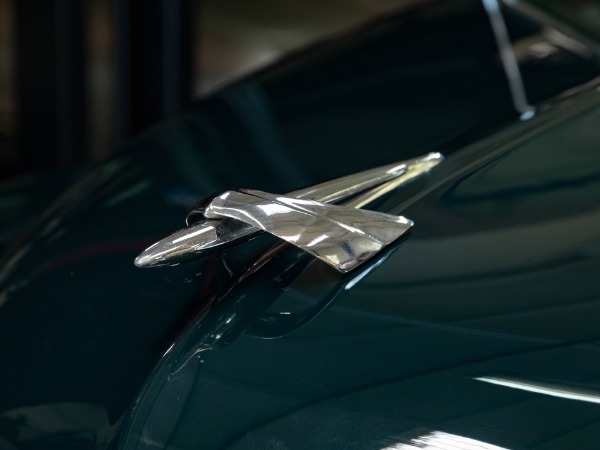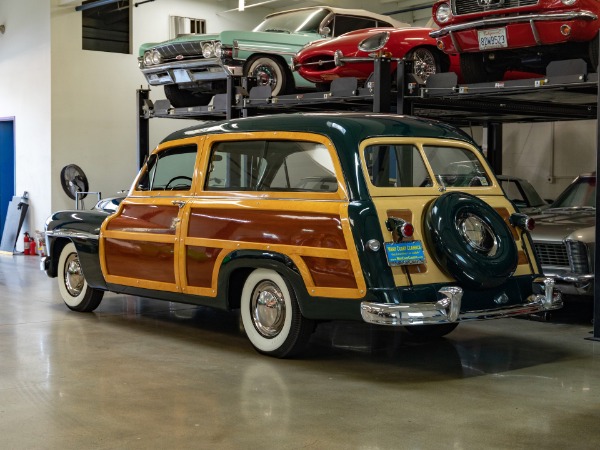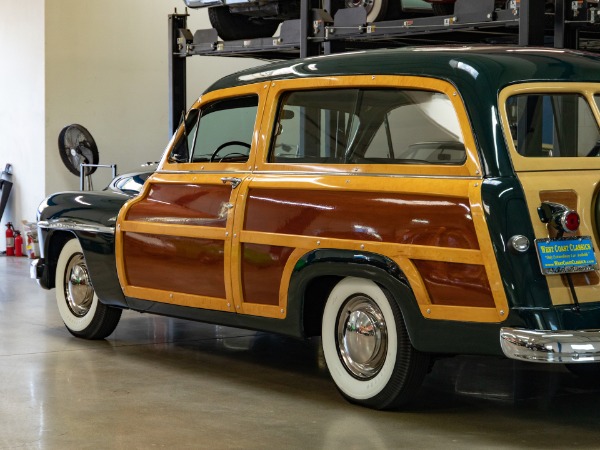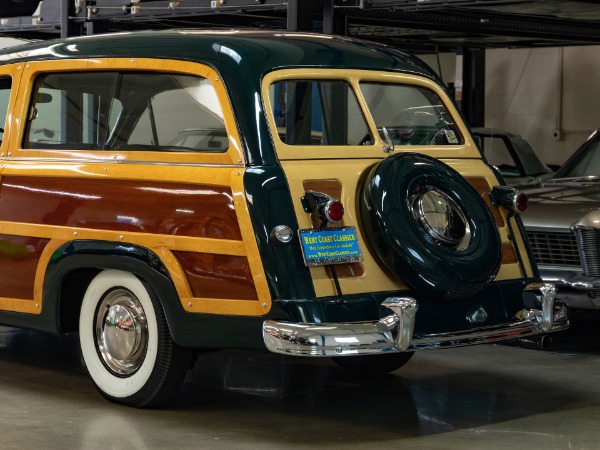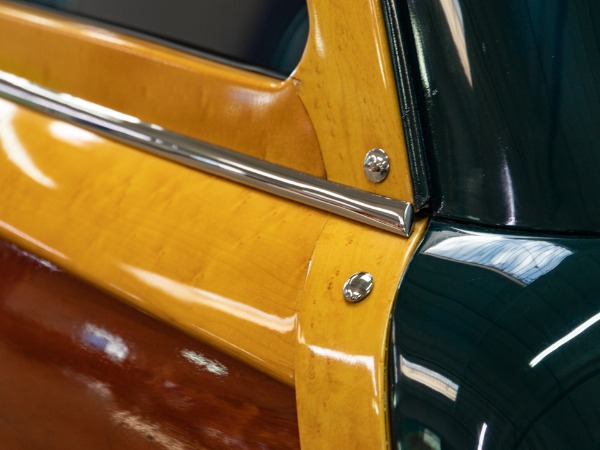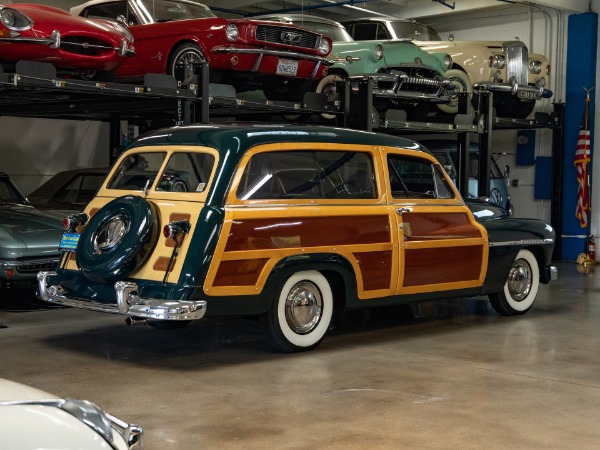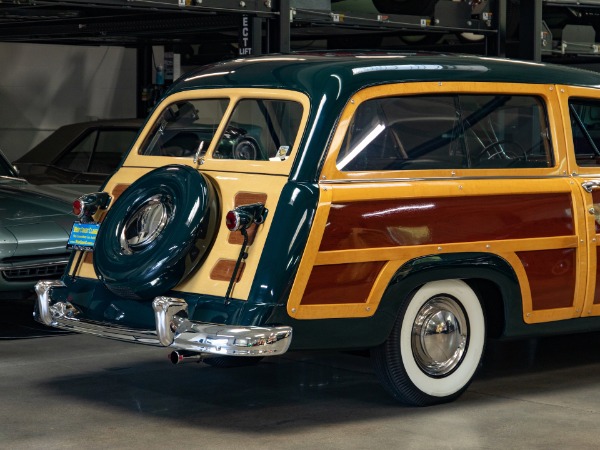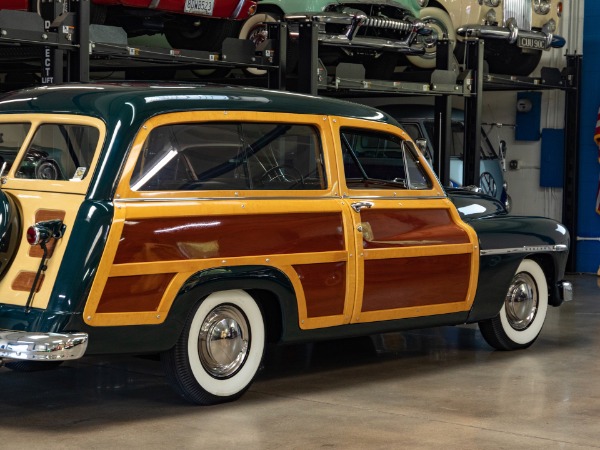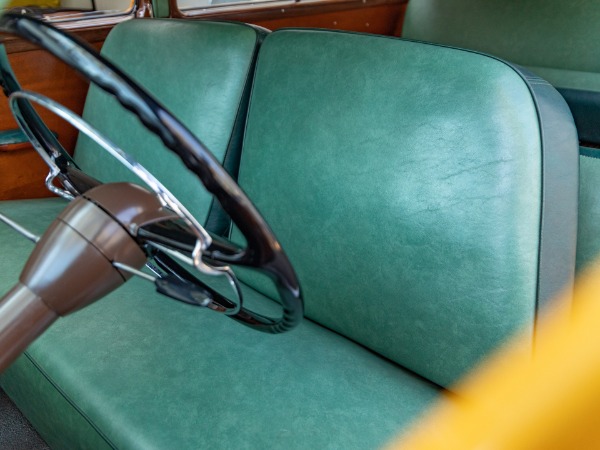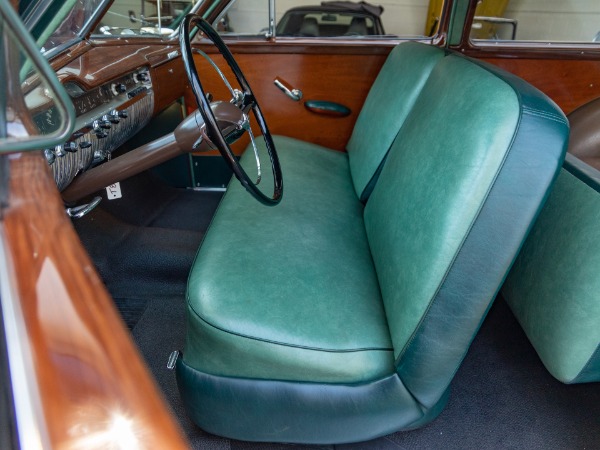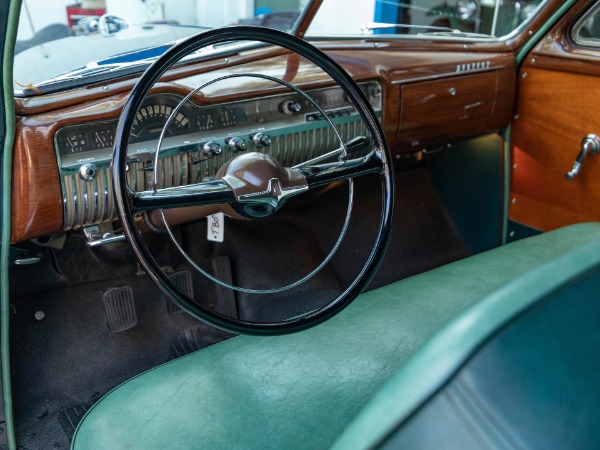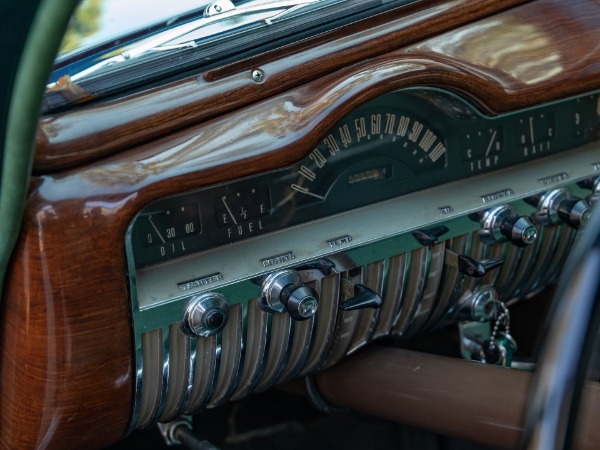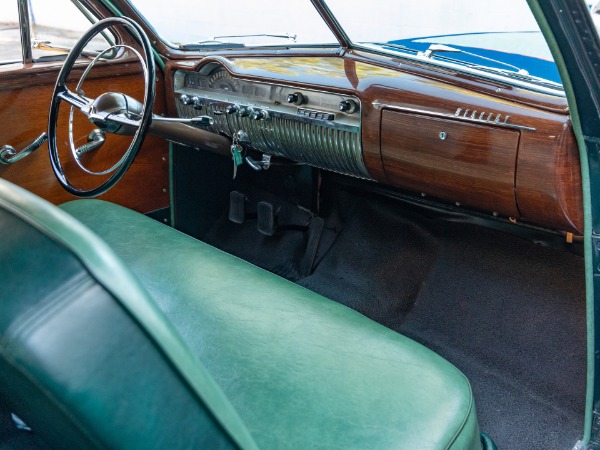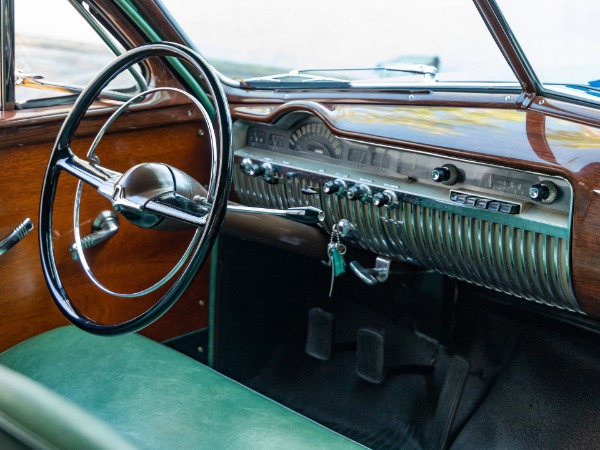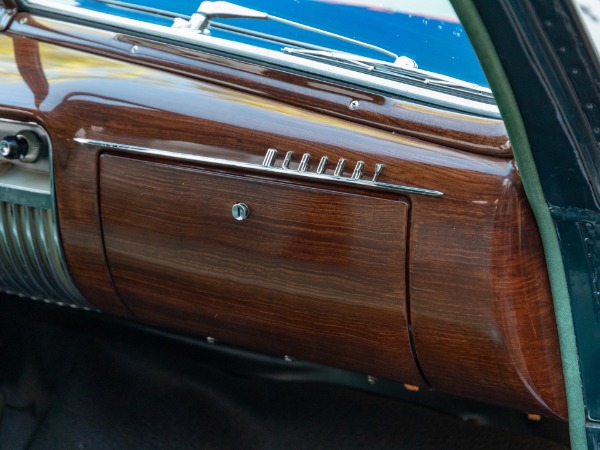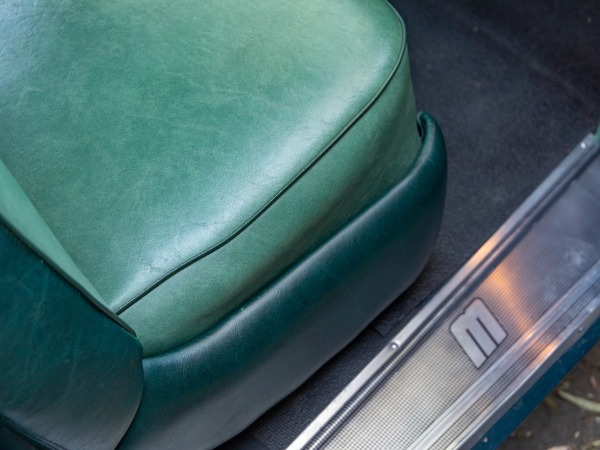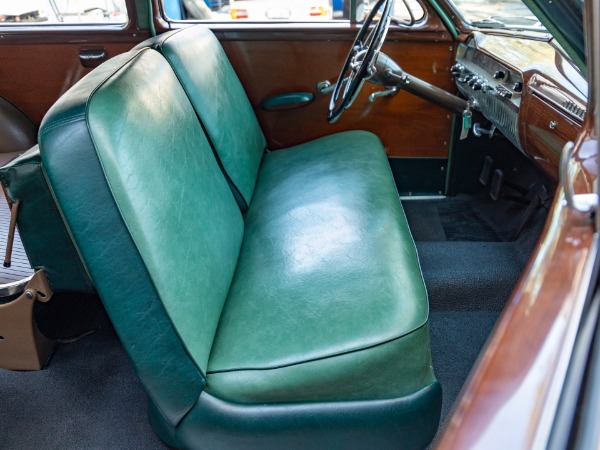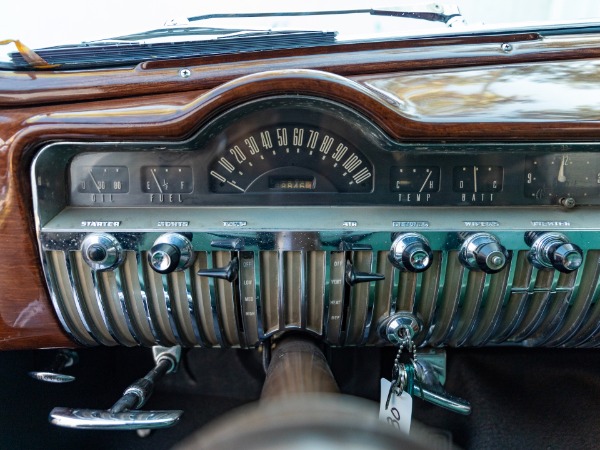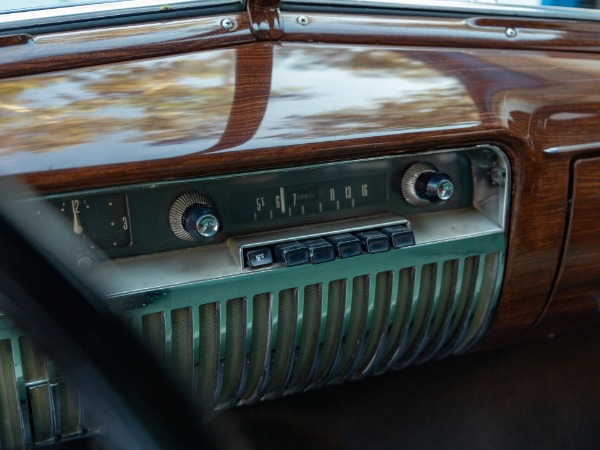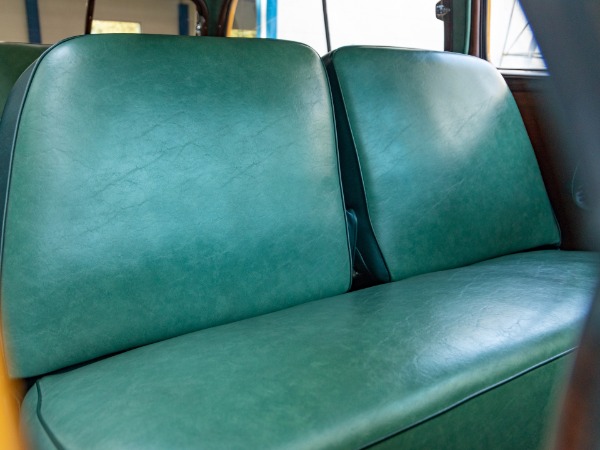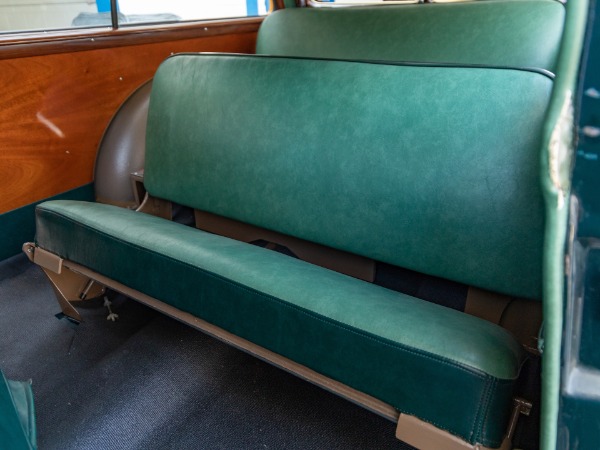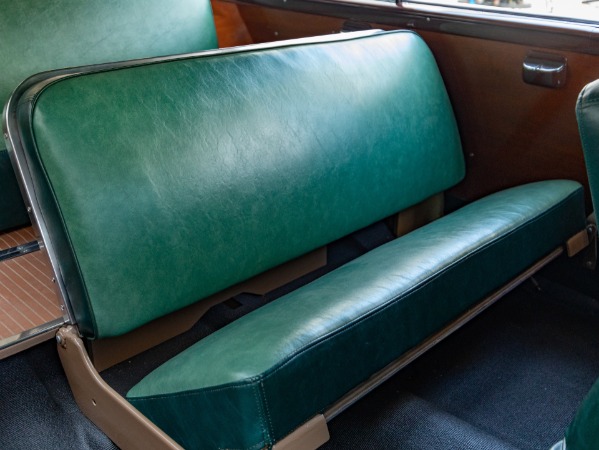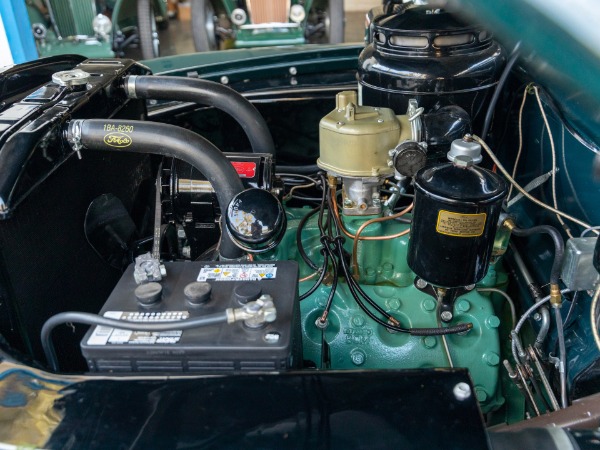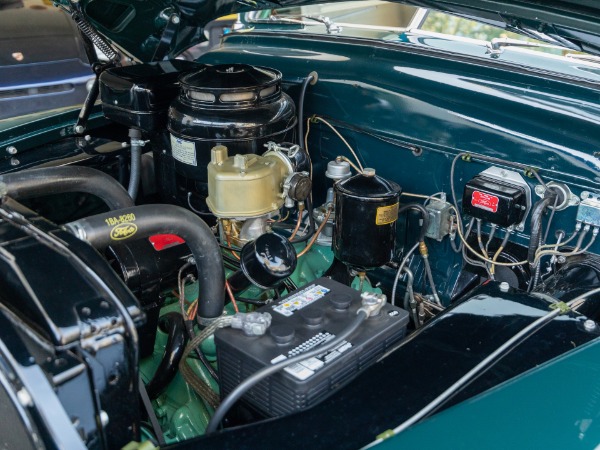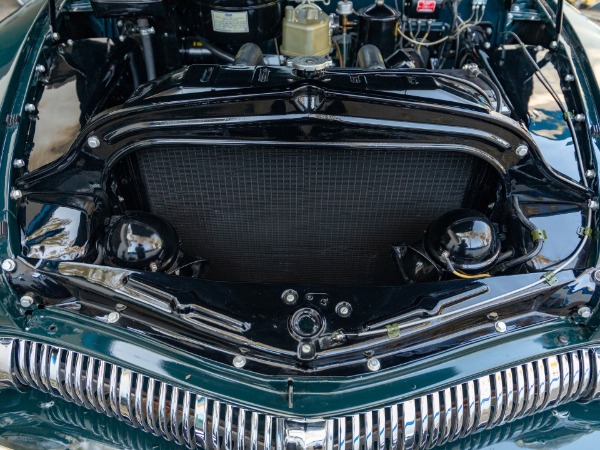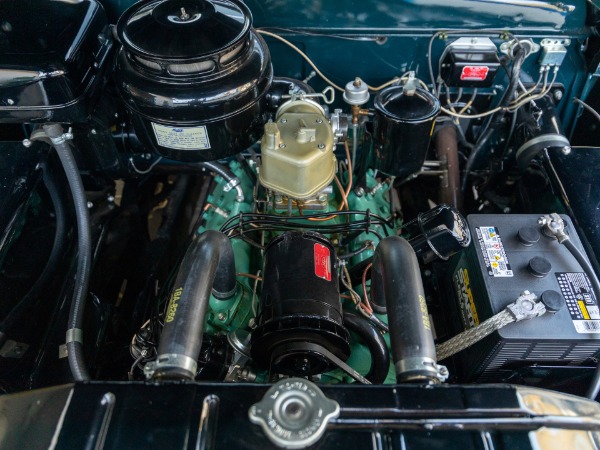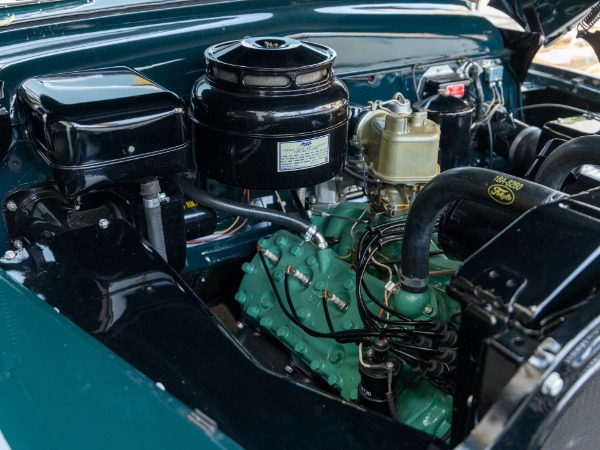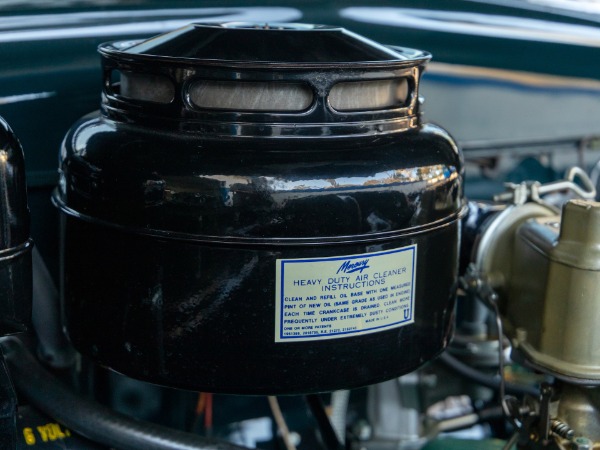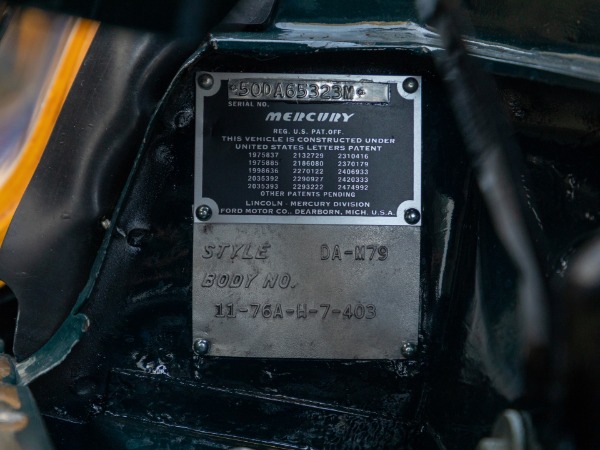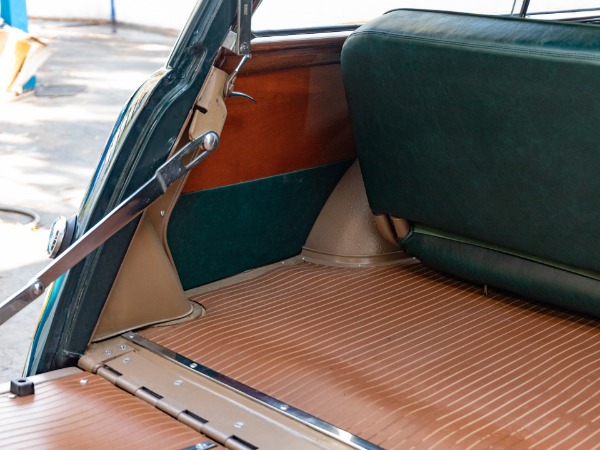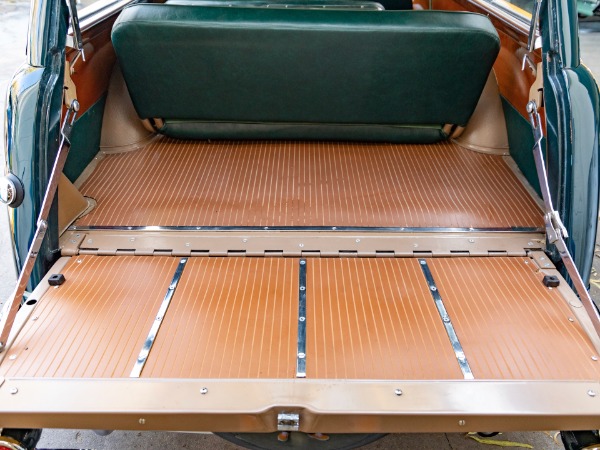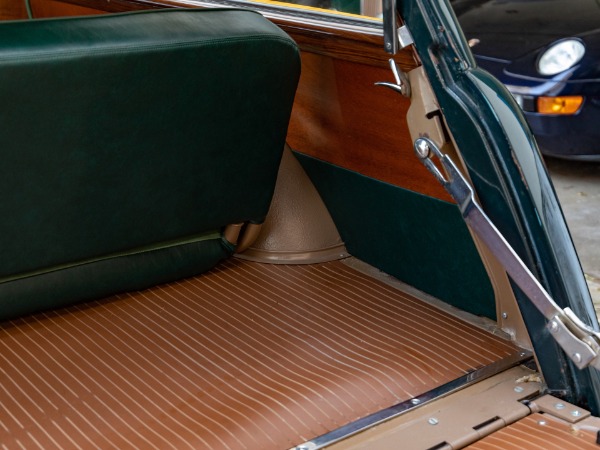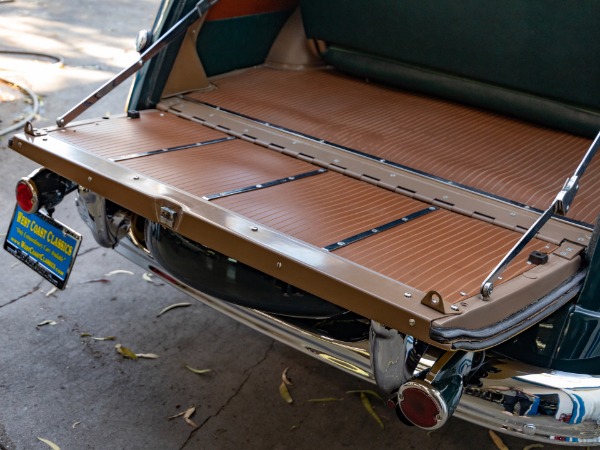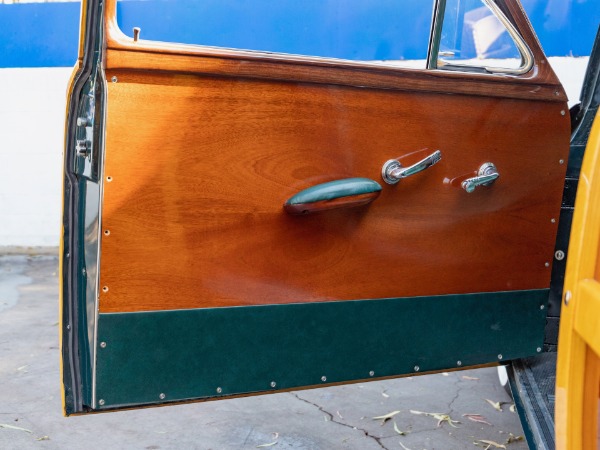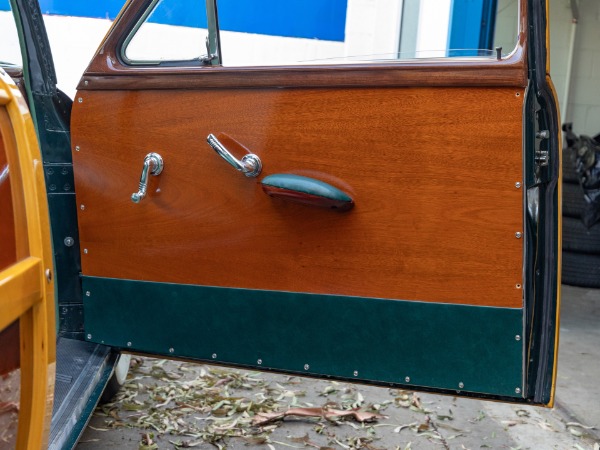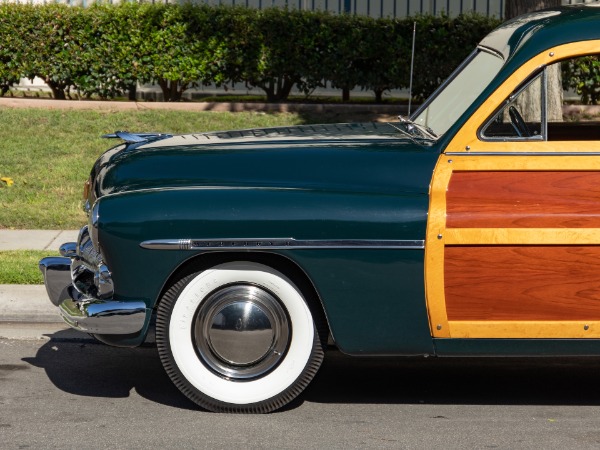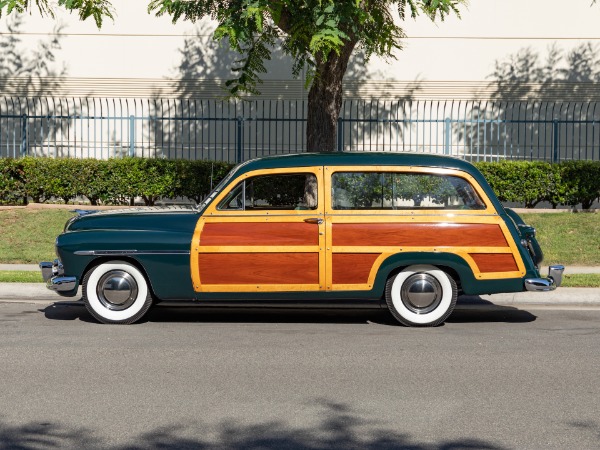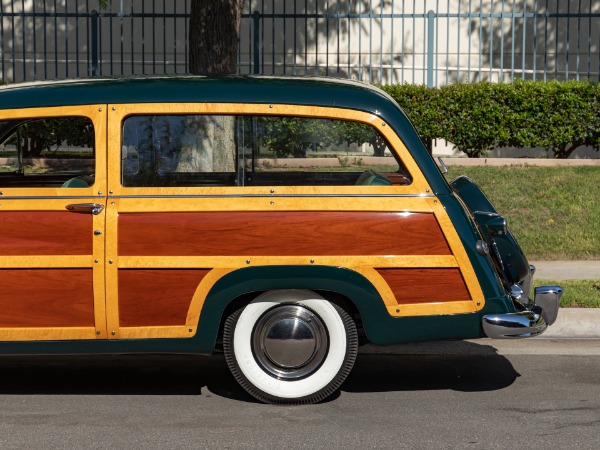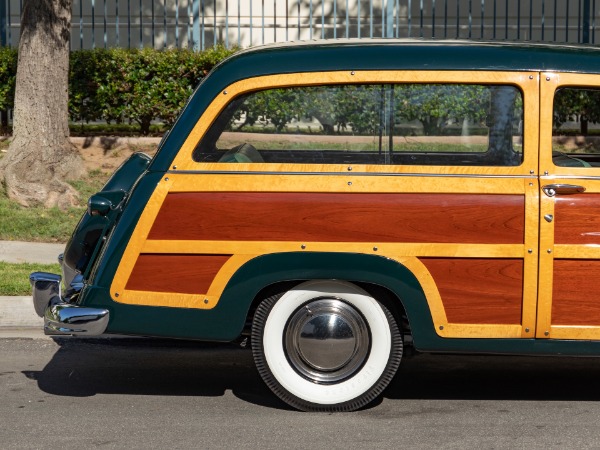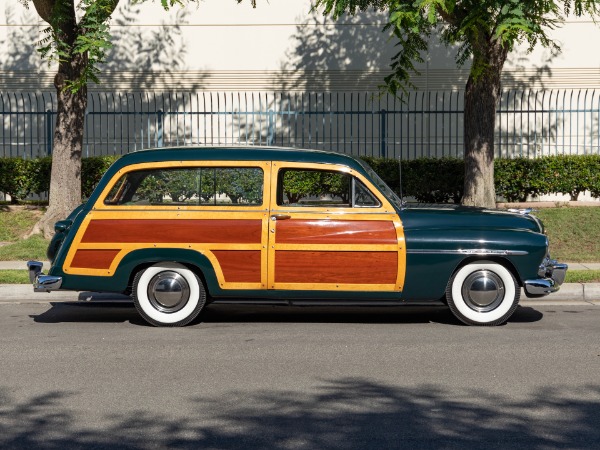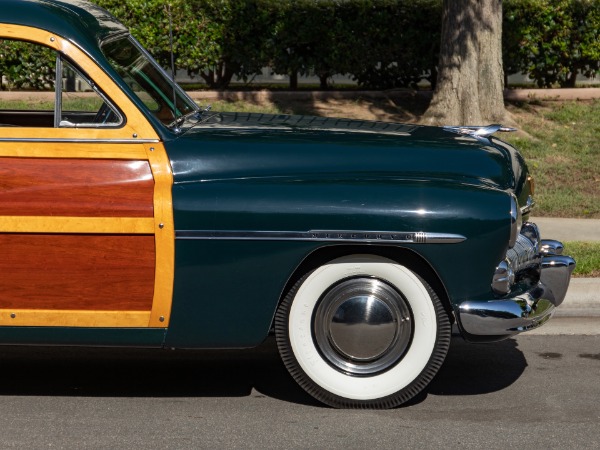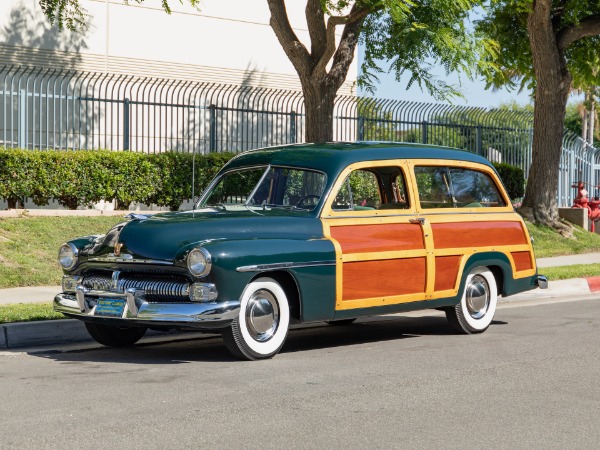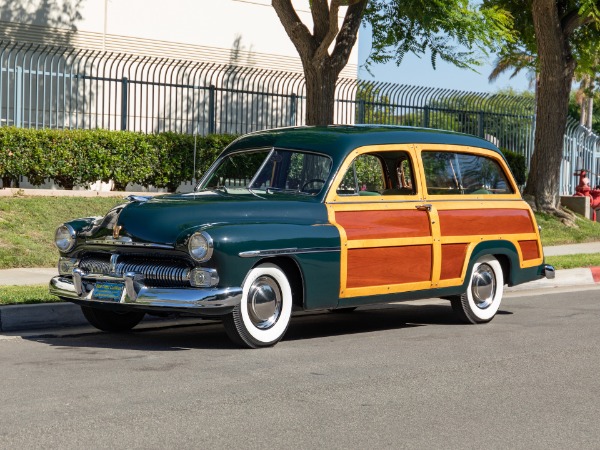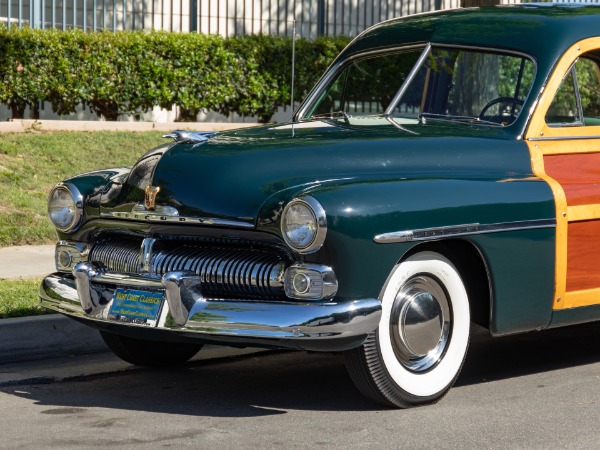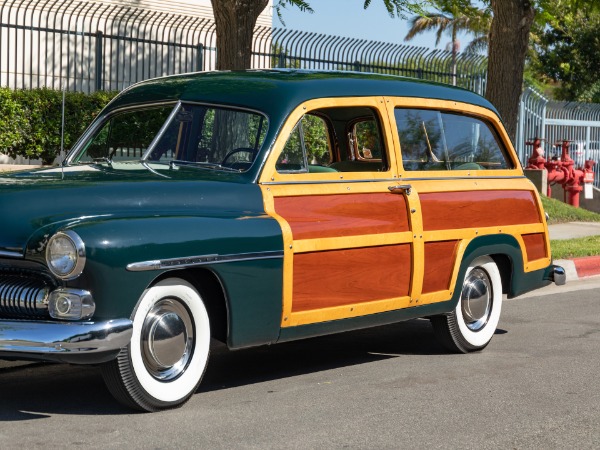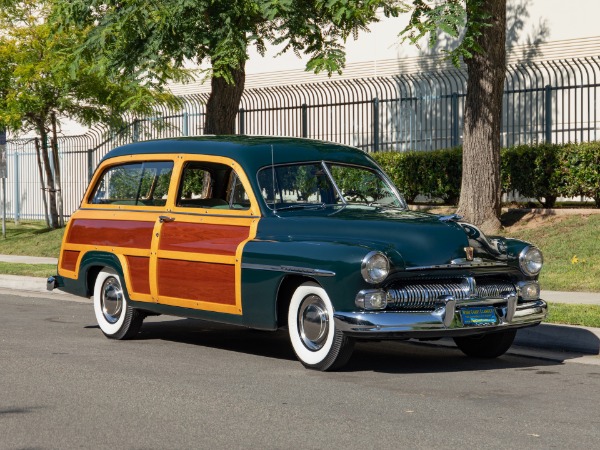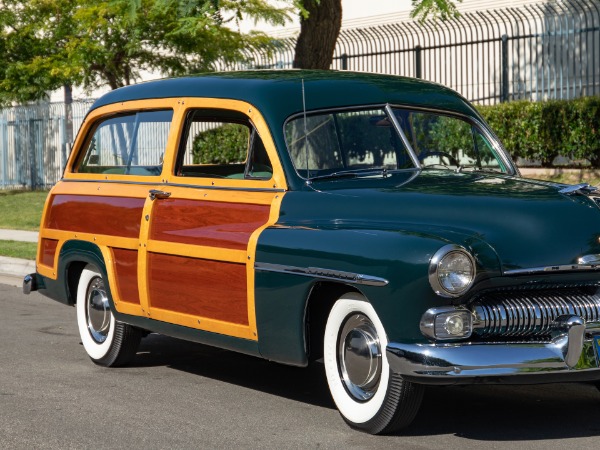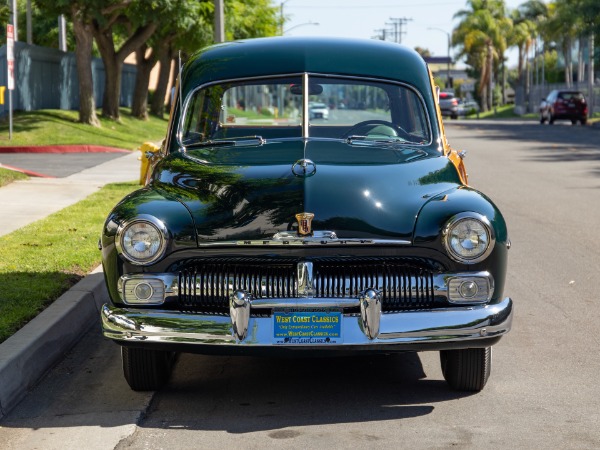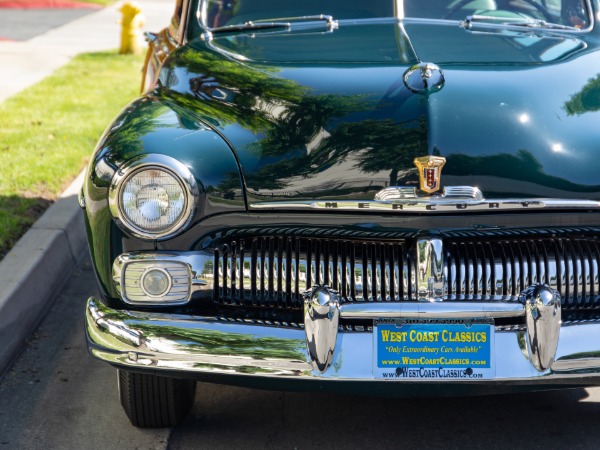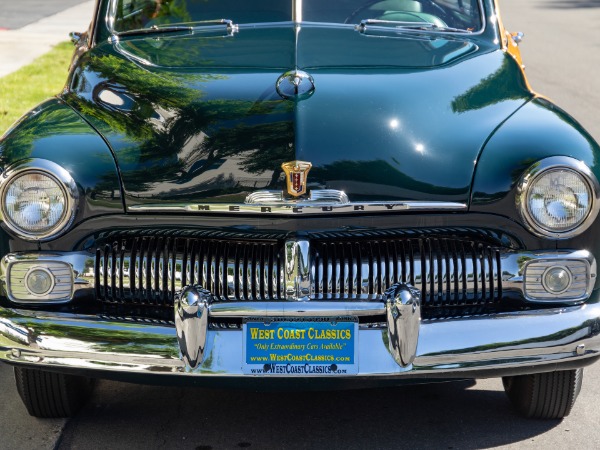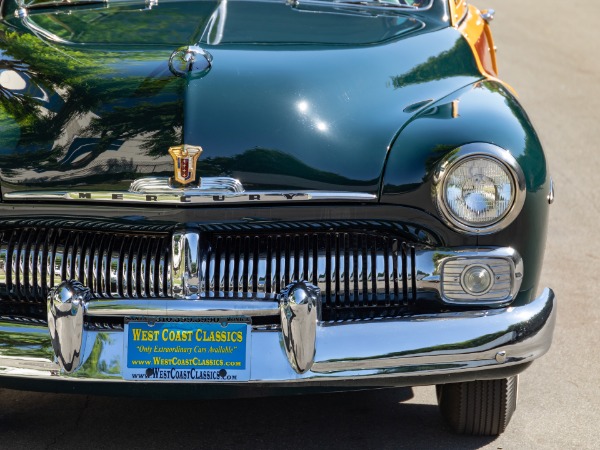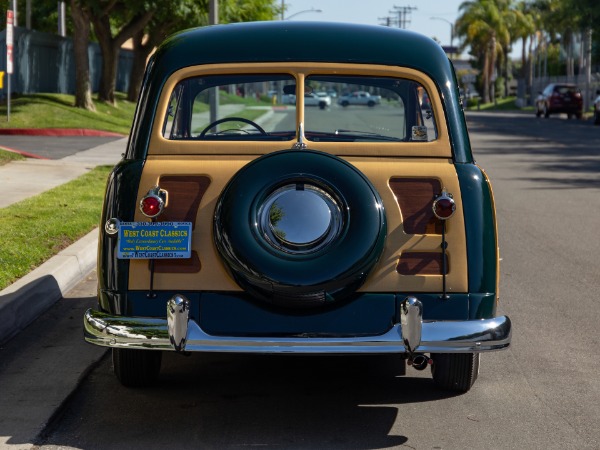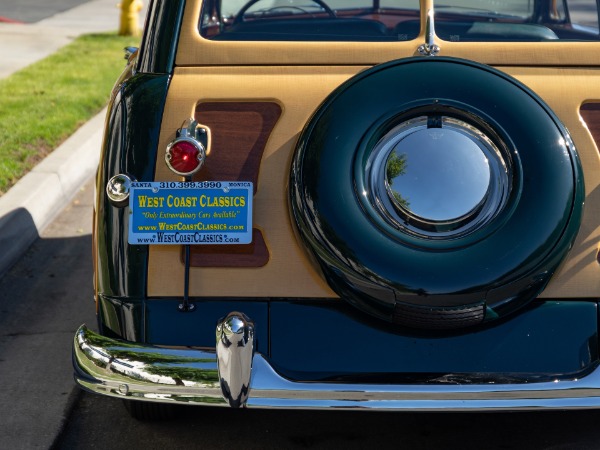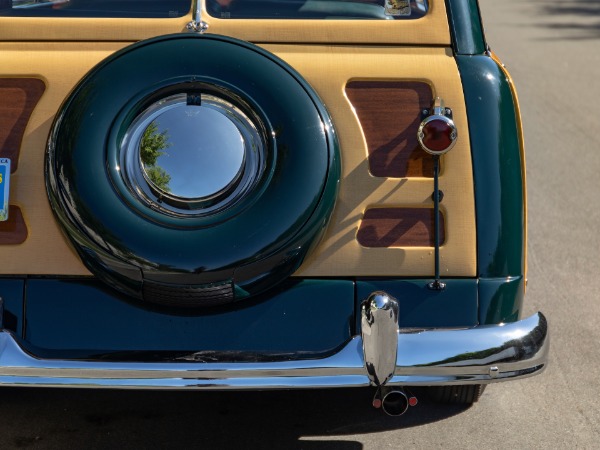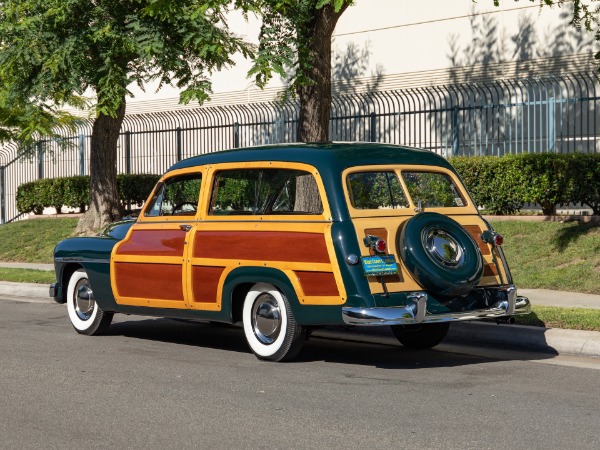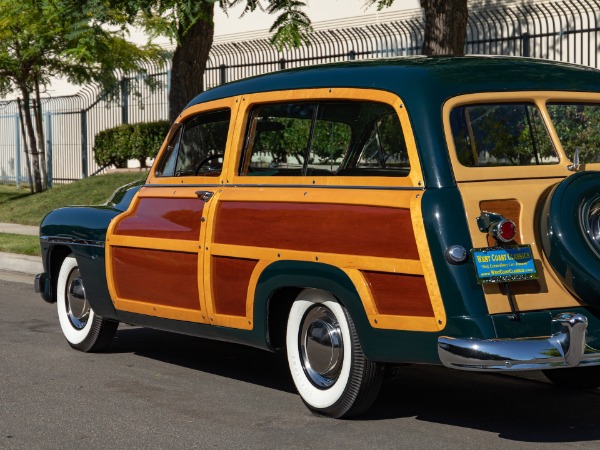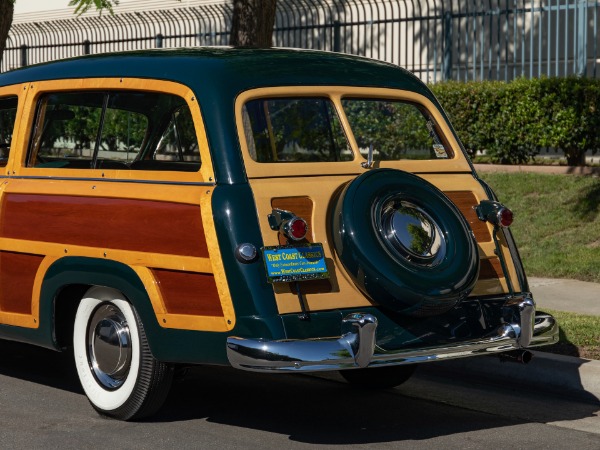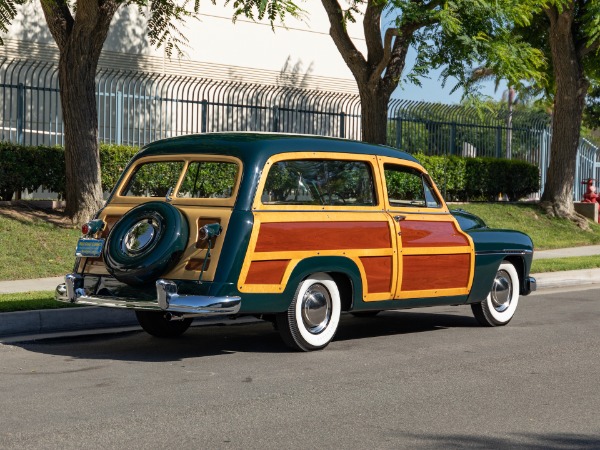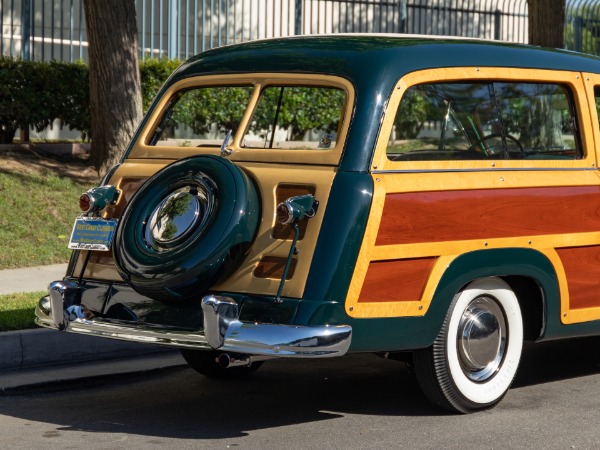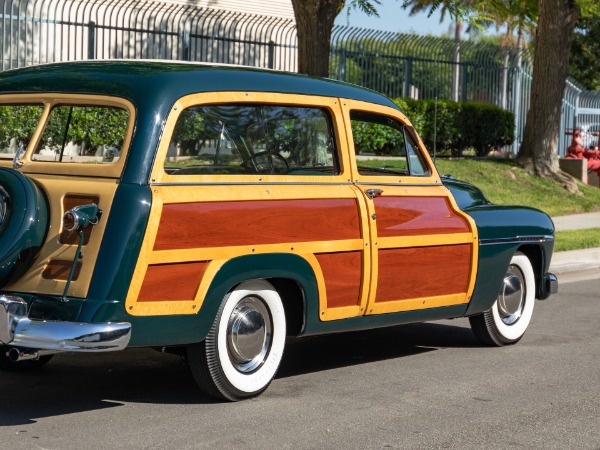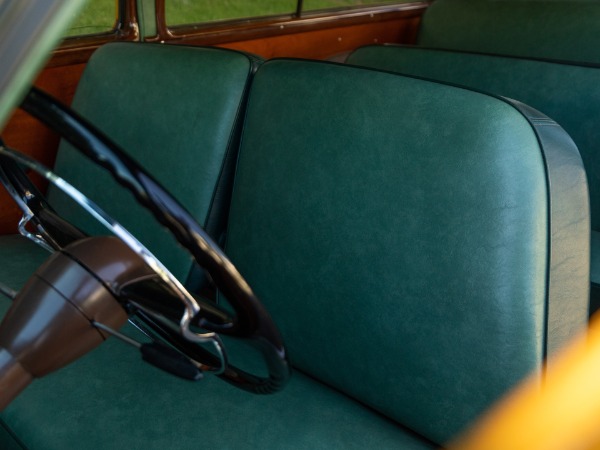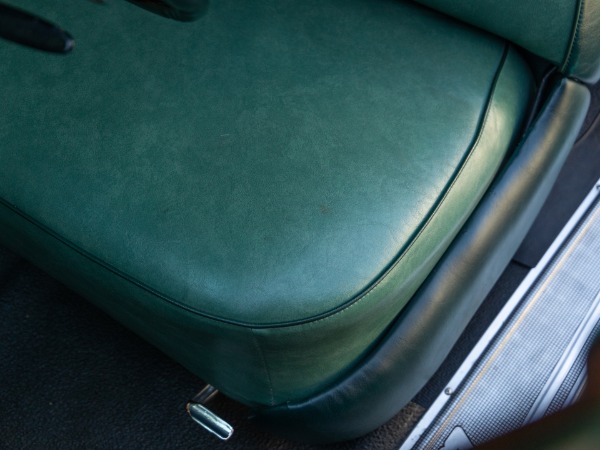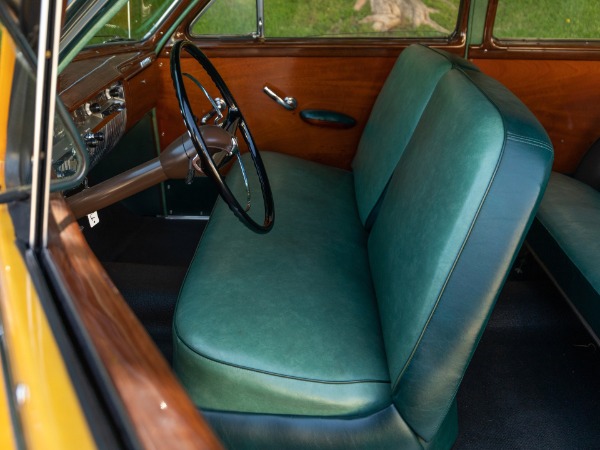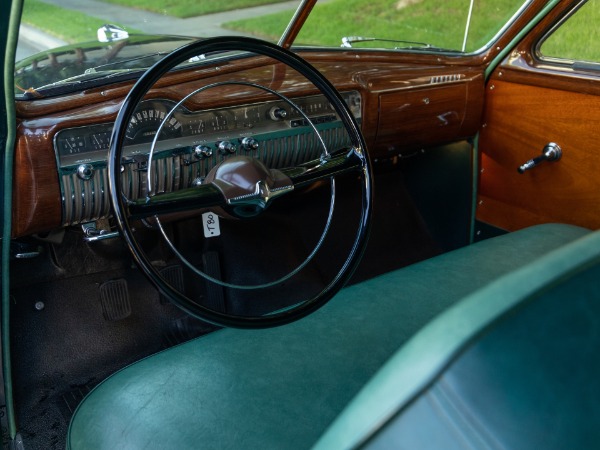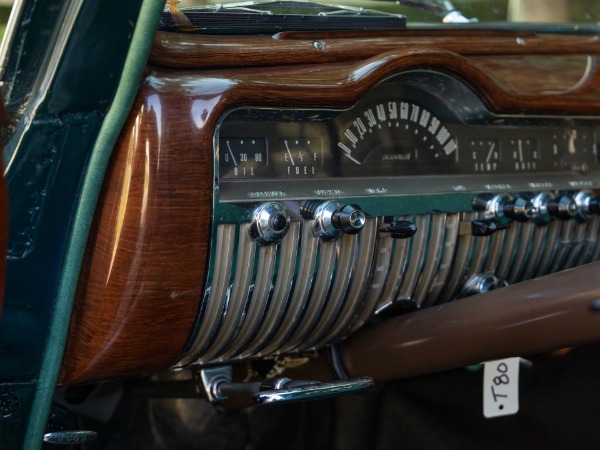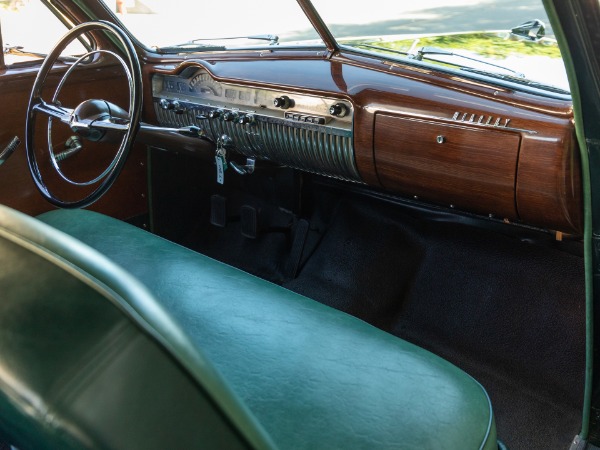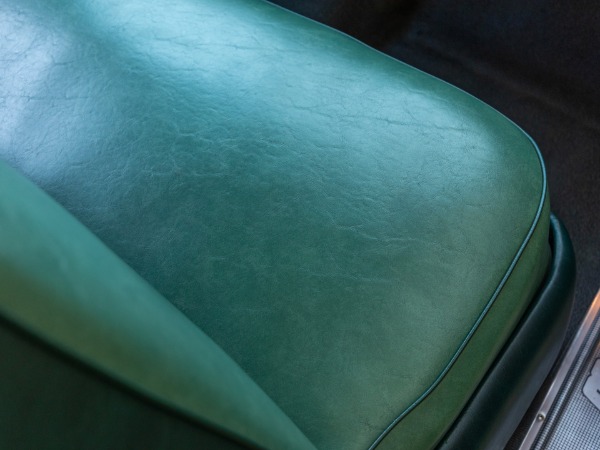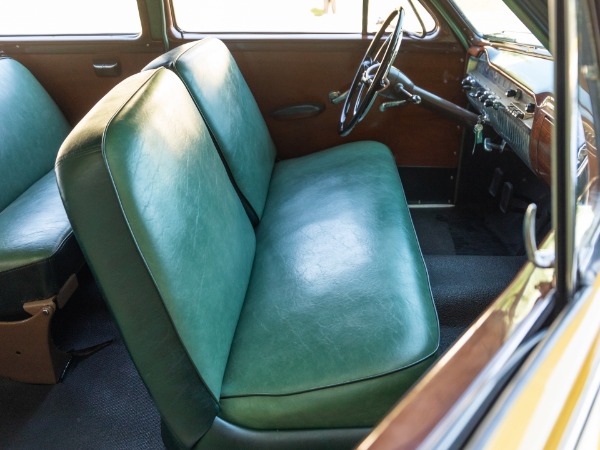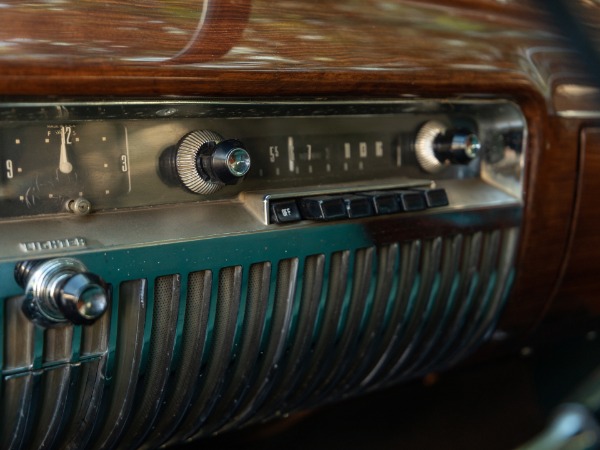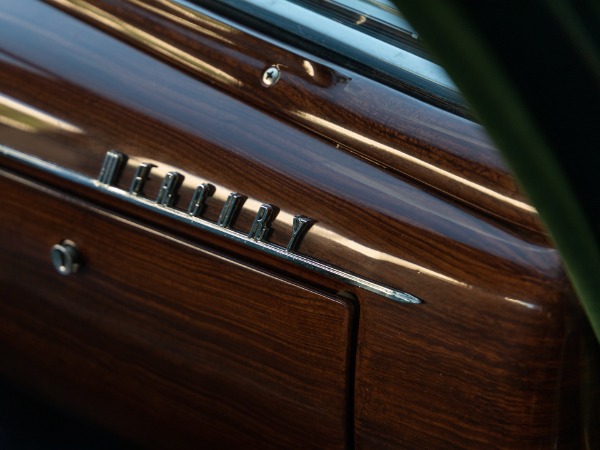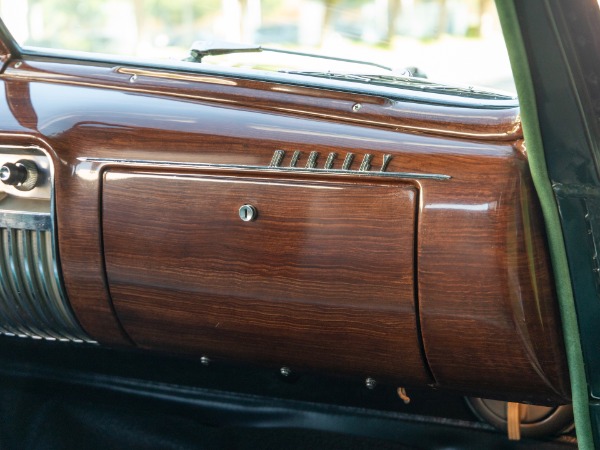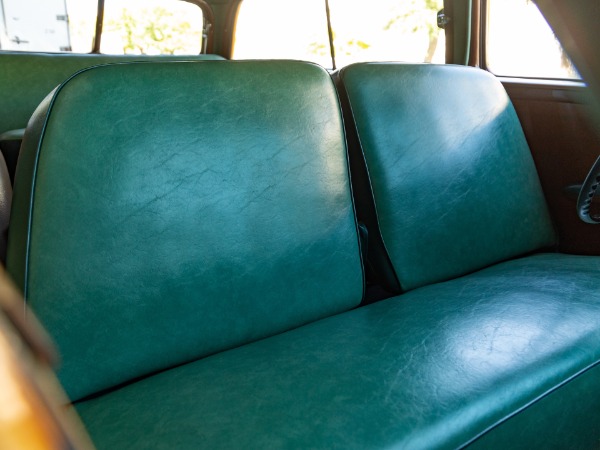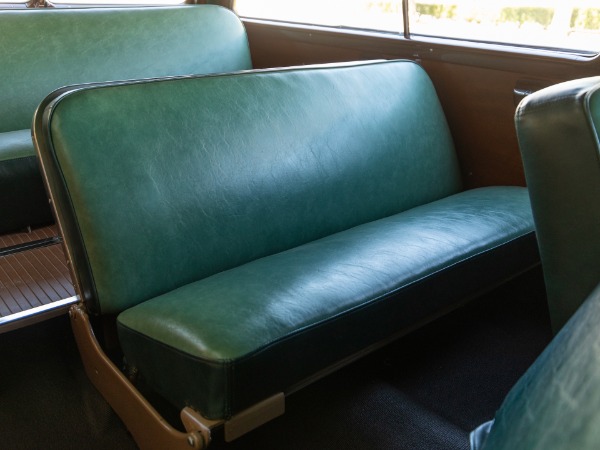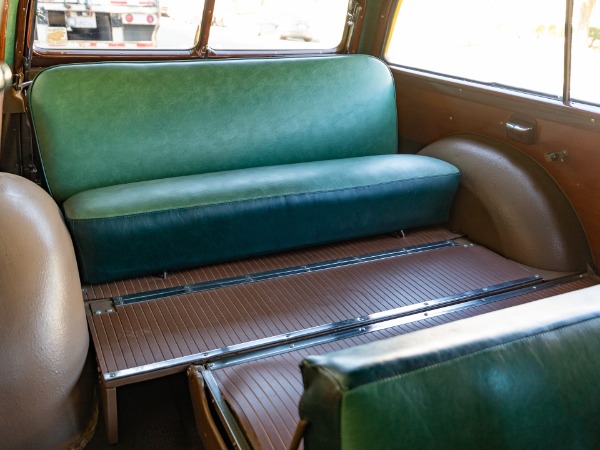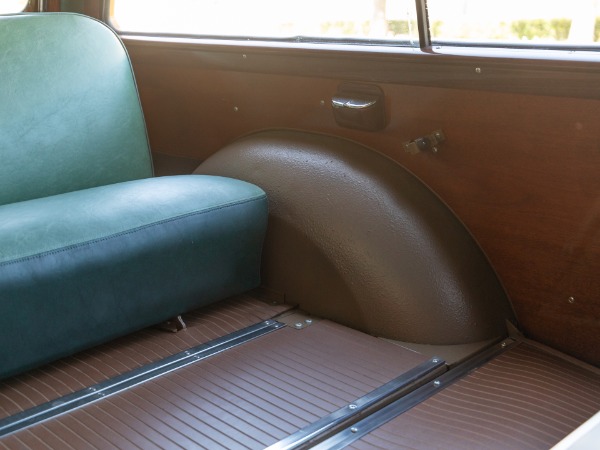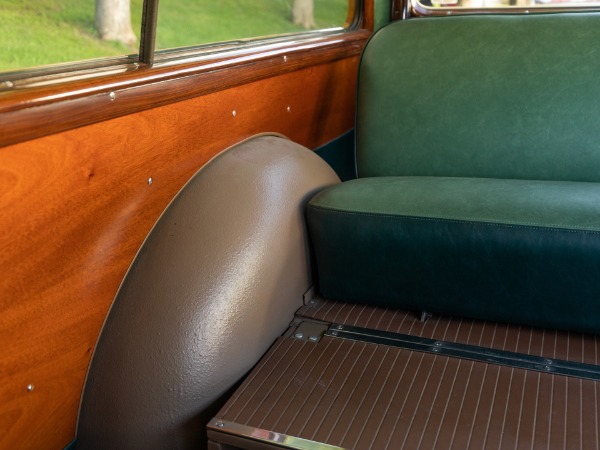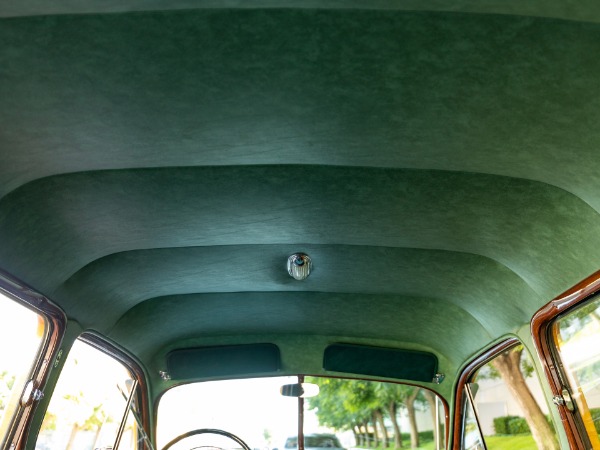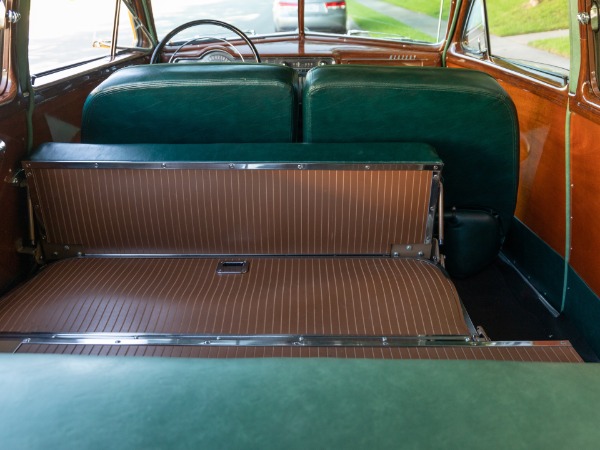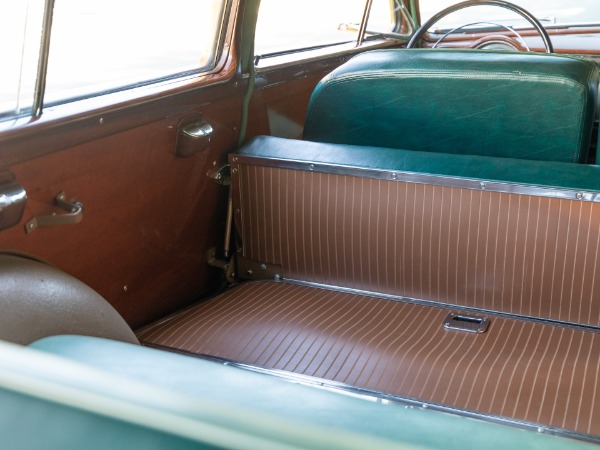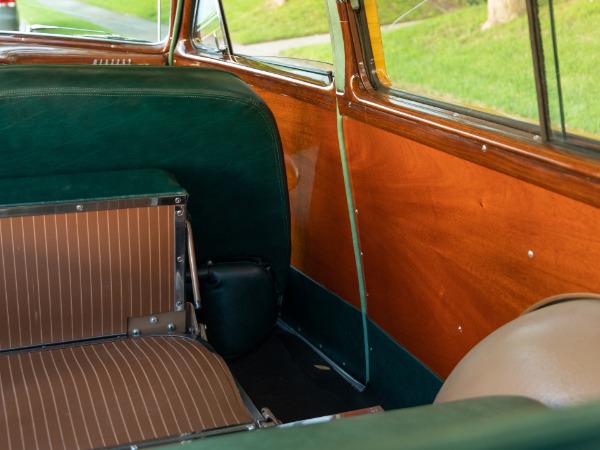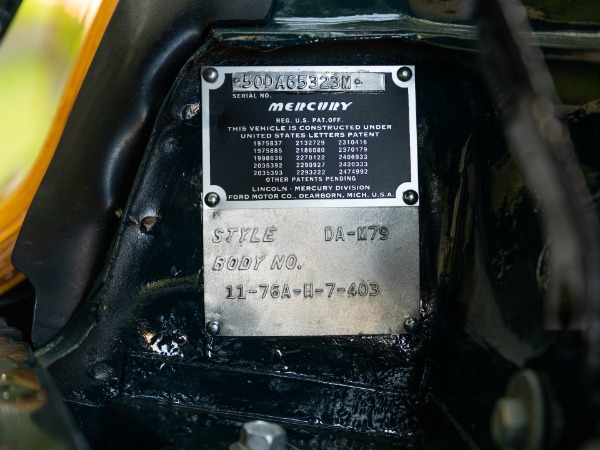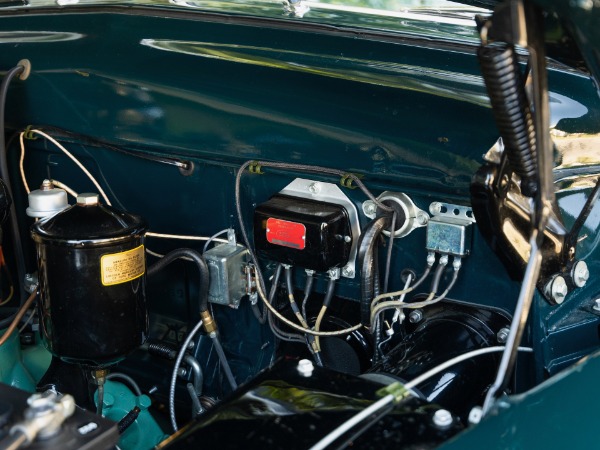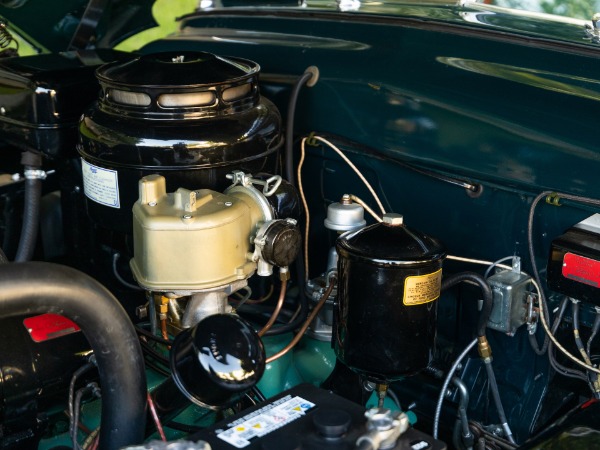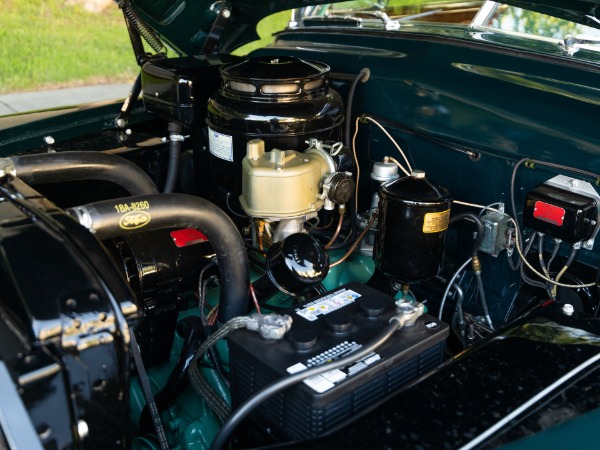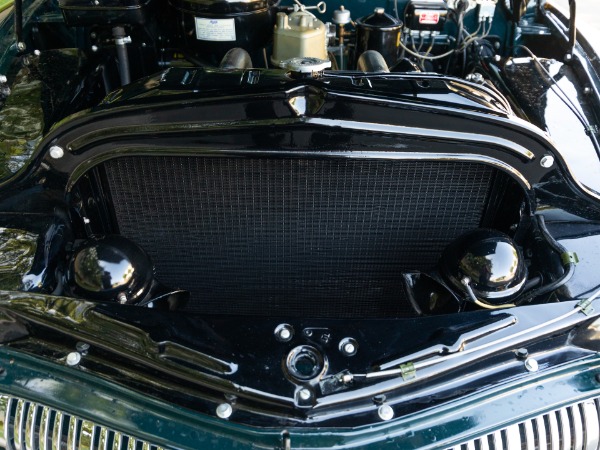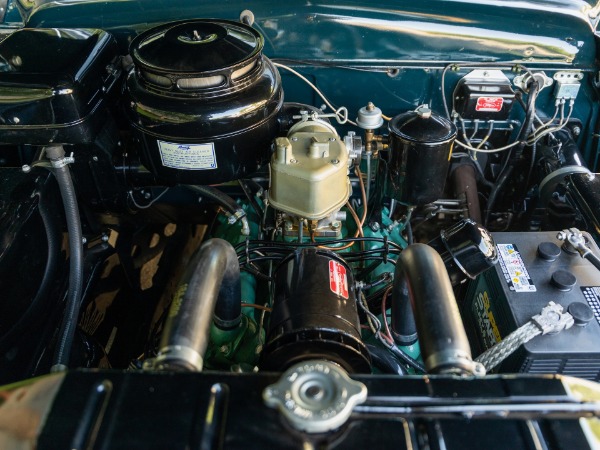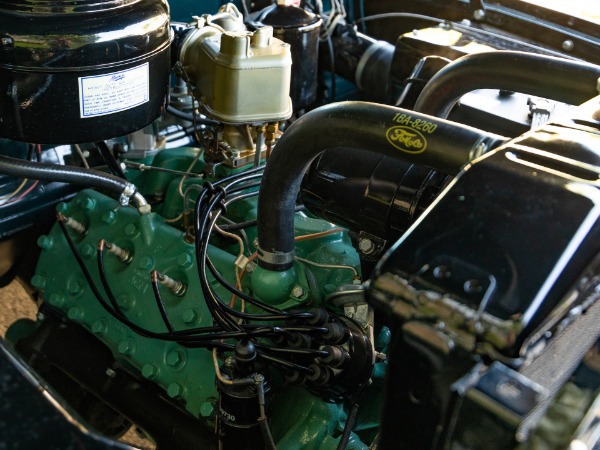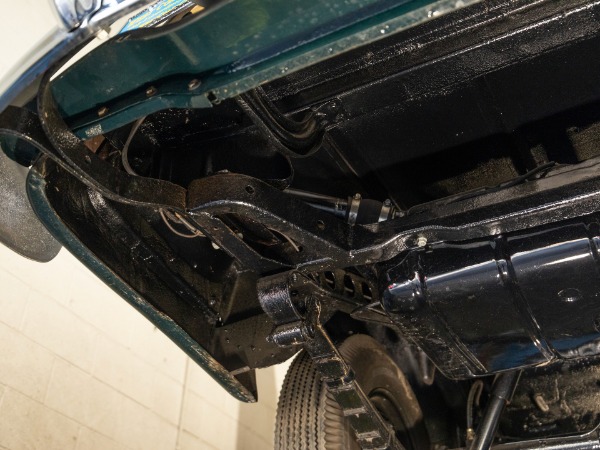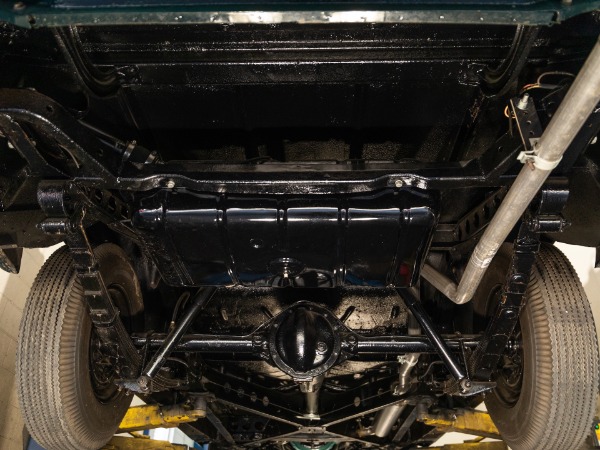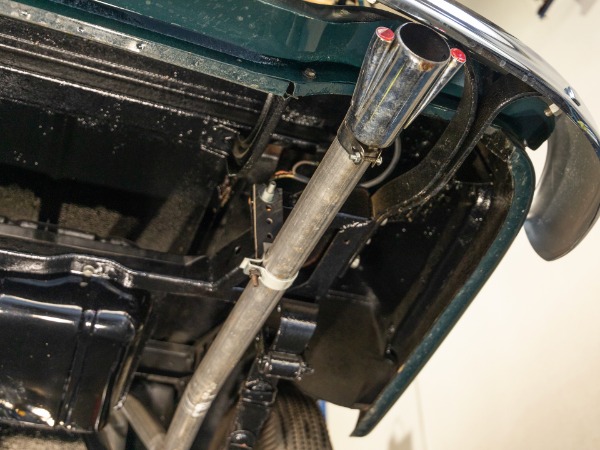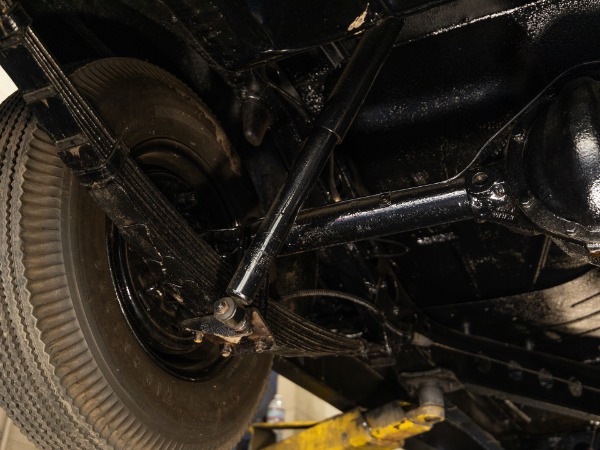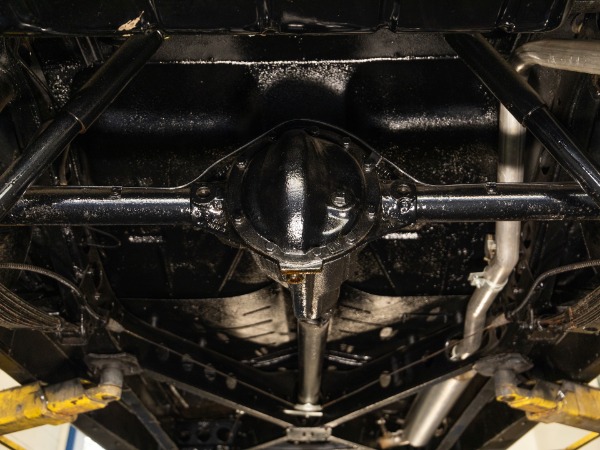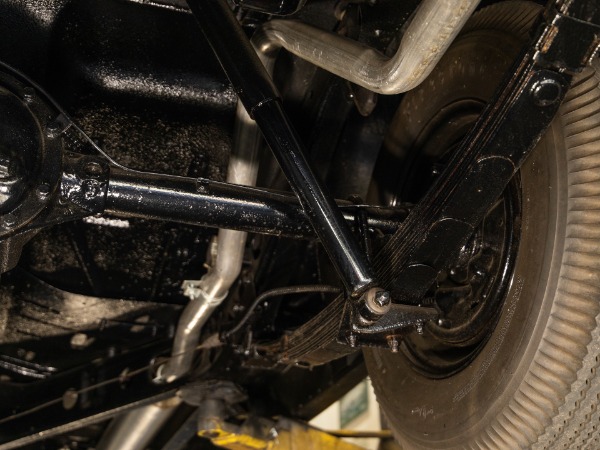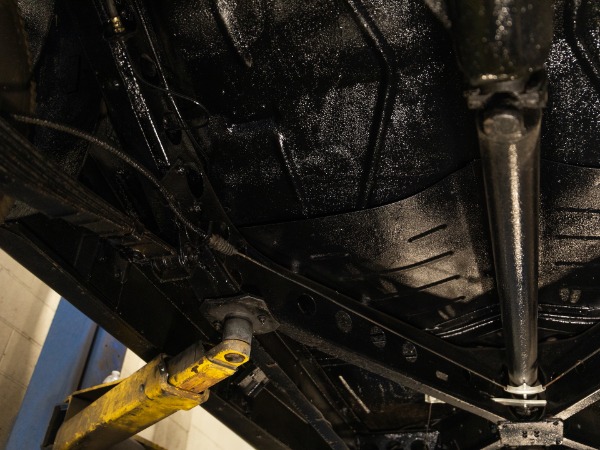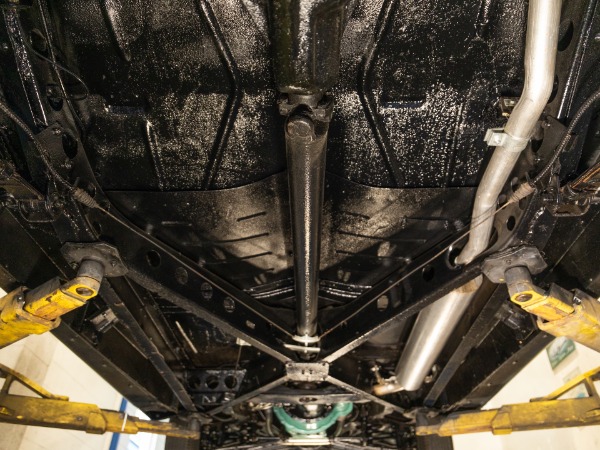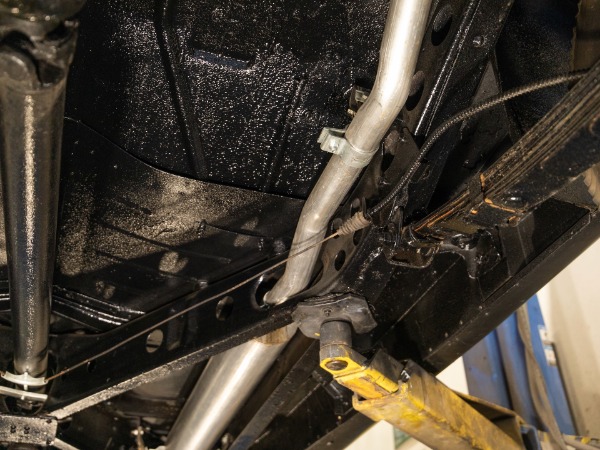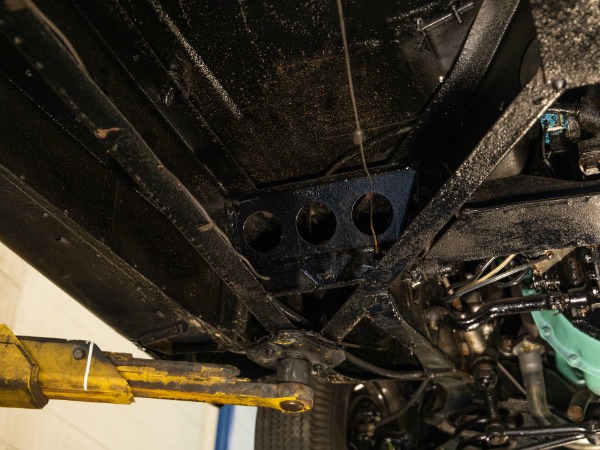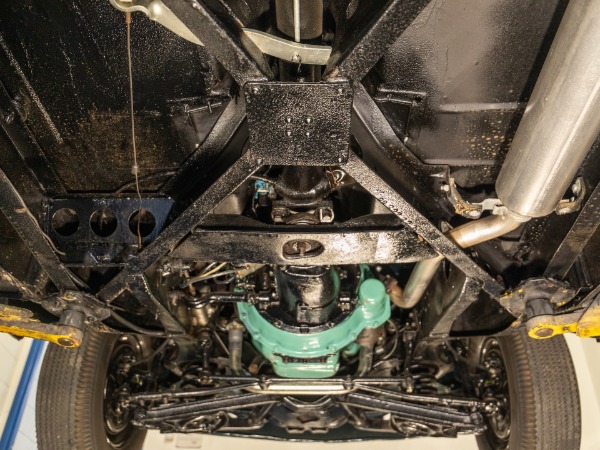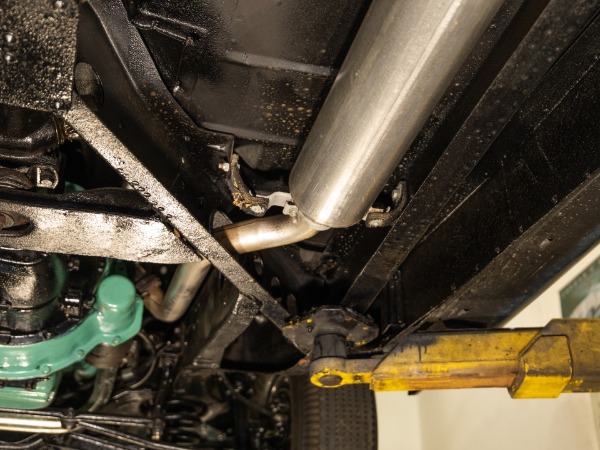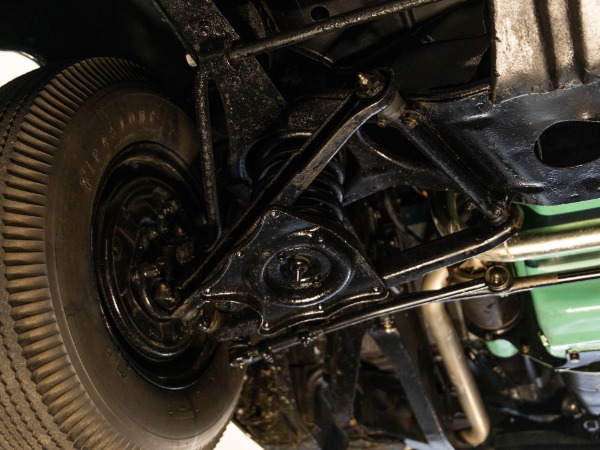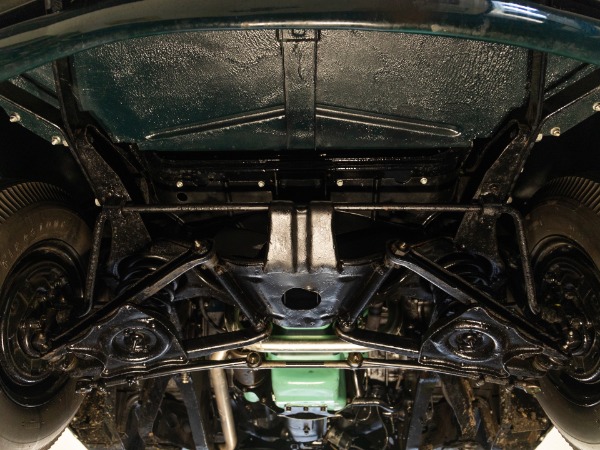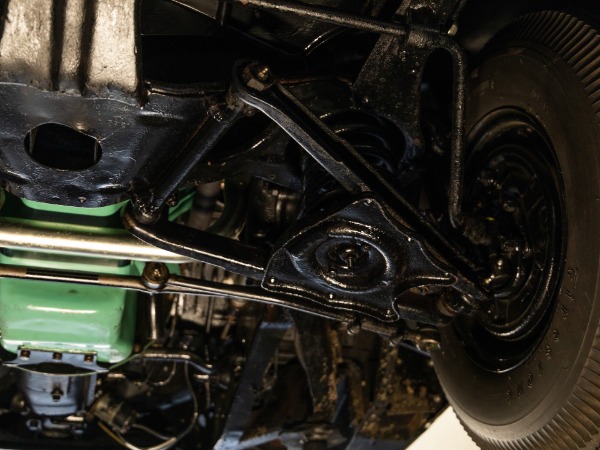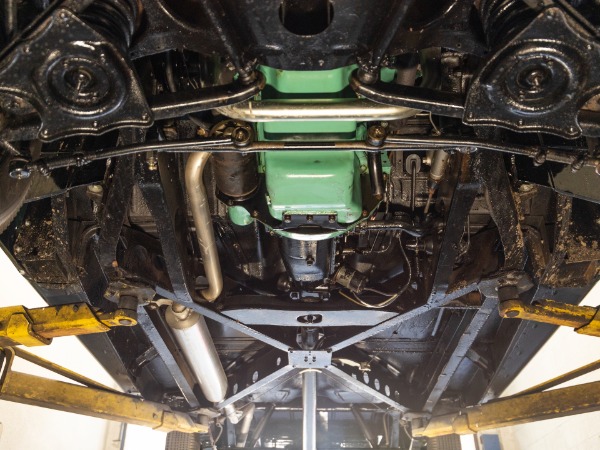West Coast Classics are proud to present an absolutely beautiful example of this no expense spared comprehensive restoration of this all American classic 1950 Mercury Eight 'Everglade Green' Woody Station Wagon, a truly exceptional example with the highly desirable 255 CID V8 Mercury engine as opposed to the Ford 239 CID V8.
Comprehensive frame-off restoration
255 CI Flathead V-8 engine
Oil-bath air cleaner and oil filter
Column shifted 3-speed manual transmission
Everglade Green exterior with woodgrain panels
Medium Green leather 3-row interior
Fold down 2nd row seat and removable 3rd row
Wood trimmed door cards
This 1950 Mercury is finished in the very striking 'Everglade Green' color with wood body moldings over a matching 'Light Green' interior. Power comes from a 255ci flathead V8 paired with a three-speed manual transmission, and additional equipment includes a wooden split tailgate, sliding rear side windows, as well as a push-button AM radio and a Merco-Therm ventilation and heating system. 15steel wheels with chrome hubcaps and trim rings are mounted with 225/75 Coker Classic wide-whitewall tires. A covered spare is mounted to the split tailgate, and braking is provided by four-wheel drums.
The cabin features a split front bench and two rear benches upholstered in the same 'Light Green' upholstery. Matching materials line the ceiling, and the doors, tailgate, and side panels are trimmed with refinished wood. Equipment includes an AM radio along with a Merco-Therm ventilation and heating system. The two-spoke steering wheel features a chrome horn ring and frames a 110-mph speedometer, auxiliary gauges, and an analog clock. The 255ci flathead V8 features a single downdraft carburetor with an offset oil-bath air cleaner.
The first woodies were manufactured in the early 1900s by local coach makers. As was customary for all coach builders they bought chassis without bodies and then constructed and crafted the bodies out of wood themselves. The coach makers would then sell these bespoke creations to local business owners who would use them to transport guests to and from the train stations and local resorts and attractions and later airports. These wagons were multi-seat transporters, with room for up to 8 passengers plus luggage and this early usage led to the vehicles being known first as depot hacks, referring to the depots and the old horse-drawn carriage nickname of "hack".
The woody continued to grow in popularity, until finally in 1929, Ford released its own version of it. Ford marketed the cars as all-purpose utilitarian vehicles with a low initial cost, as wood-bodied cars were at that time less expensive to build than steel-bodied cars. Through 1939, Fords station wagon bodies were assembled by Murray Corporation of America, from wood grown in Henry Fords very own northern Michigan forests. That year, however, relations between Ford Motor Company and Murray soured. This led Ford to consider in-house production of the station wagons. Discussions with the management of the Iron Mountain operation, then providing the wood parts to Murray for assembly, resulted in a proposal for all body assembly to be done in the northern Michigan locale and the bodies would then be sent to assembly plants fully finished and trimmed. The change took place at the beginning of the 1940 model year.
The bodies then took on a much different appearance. The roofline was subtly altered, becoming more rounded at the windshield header. Panel spacing was changed, such that the lower panel became narrower, and the rear quarter panels were consolidated into one piece. The rear doors, formerly hinged at the back, suicide style, now swung toward the front. The spare tire, housed inside in 1938 and 39, on the back of the drivers seat, was returned to the tailgate, where it had been located from 1935 to 1937. Deluxe wagons were given the option of maple or birch framing, while Standards came in maple only. Darker-colored gumwood began to be used for panels, in addition to birch, in both series. The choice of material was random. Bodies were given three coats of varnish, hand-sanded between each application. Three engines were available: the popular 221 cubic inch 85 hp V-8, the small 136 cubic inch 60 hp V-8 (installed in just two Standard wagons), and the larger 239 cubic inch 95 hp V-8 from the new Mercury, which was fitted to 354 Deluxe station wagons.
By the late 1940s, it became apparent to auto manufacturers that the woodies were becoming too increasingly expensive to produce and although still very popular in appearance, they were no longer a viable option for most buyers combined with the inconvenience and high cost of cleaning and maintaining the wood, so the manufacturers started making wood-paneling instead as an option for their higher-end models.
The first all new post war Mercury's, from 1949-51 were known as the 'bath tub' generation and popularized in legend by James Dean in 'Rebel Without A Cause' and beloved today as then as a cult all American 1950's classic! Four body styles, with Mercury's structural wood wagon shifting from four to two doors in this generation whilst sharing its bodyshell with Ford's wagon. The familiar flathead V8 was enlarged from the 1946-48 models and offered with a self shifting Merc-O-Matic transmission in 1951. Horsepower was also raised and these Woody Wagons were the rarest of all these models and the most prized today amongst collectors.
This particular 1950 Mercury V8 Woody Wagon was restored and customized with no expense spared and is a phenomenally well restored example which still holds true to its roots and which obviously sounds and drives absolutely magnificently - see the video on our You Tube Page on our website for visuals. The floors are original and rock-solid, with no signs of any repairs ever performed. All of the sheet metal is original, rust-free and very straight.
In summary this must be one of the finest examples anywhere of a fully operational and turn-key ready 1950 Mercury 255 CID V8 Woody Wagon which still has a classic original look in the most striking of color combinations; a wonderful example of an all American 1950 Mercury Woody Wagon!





